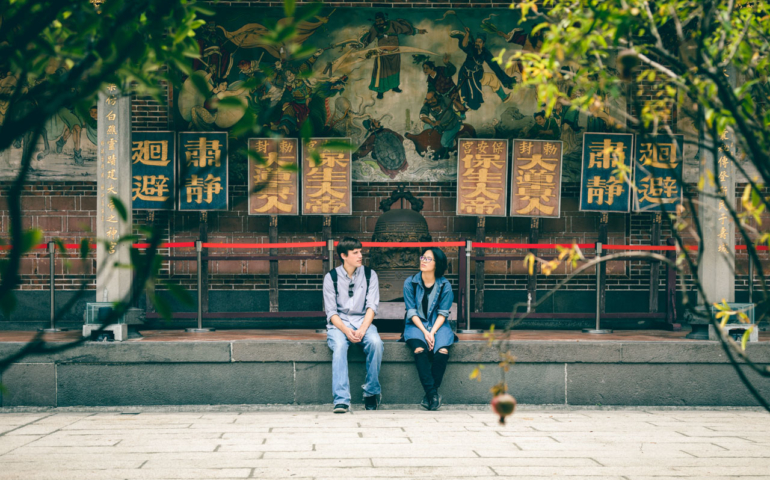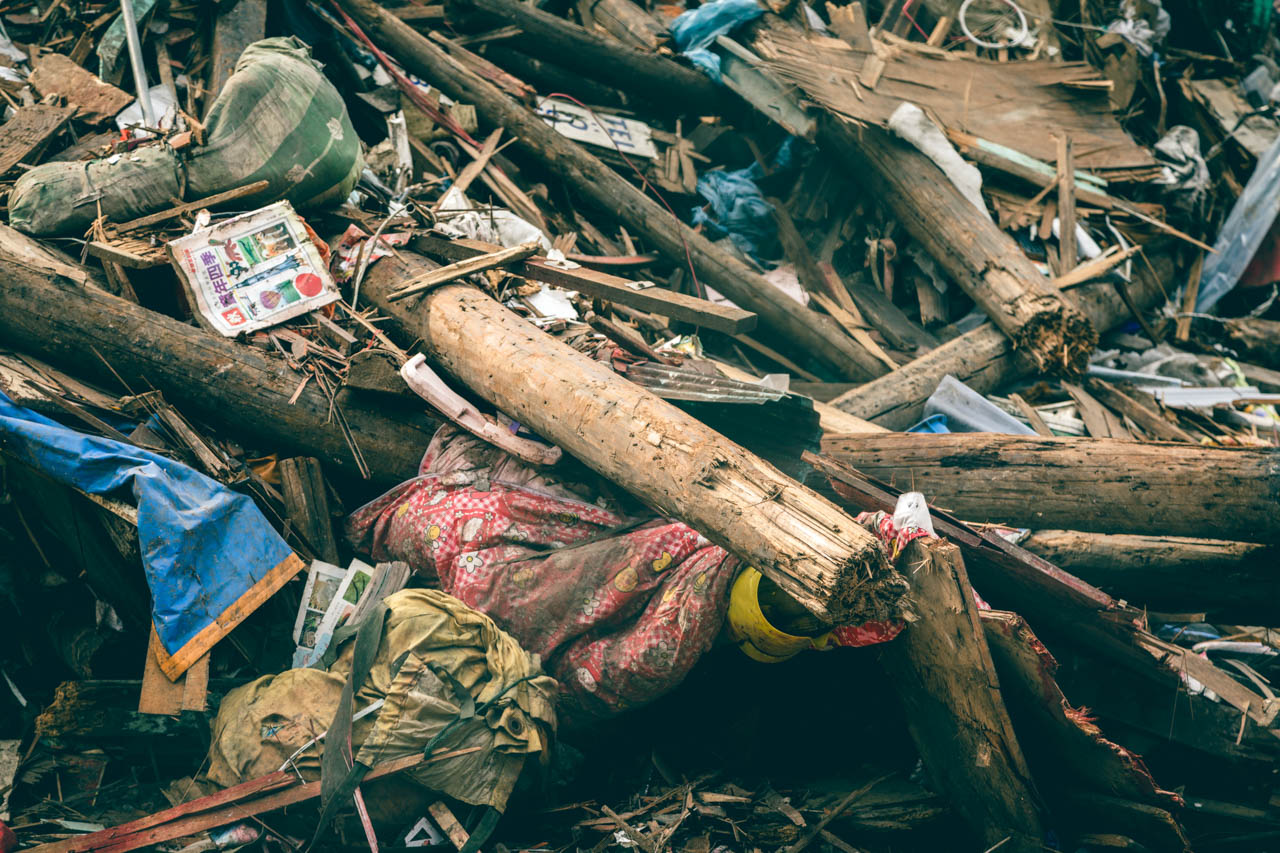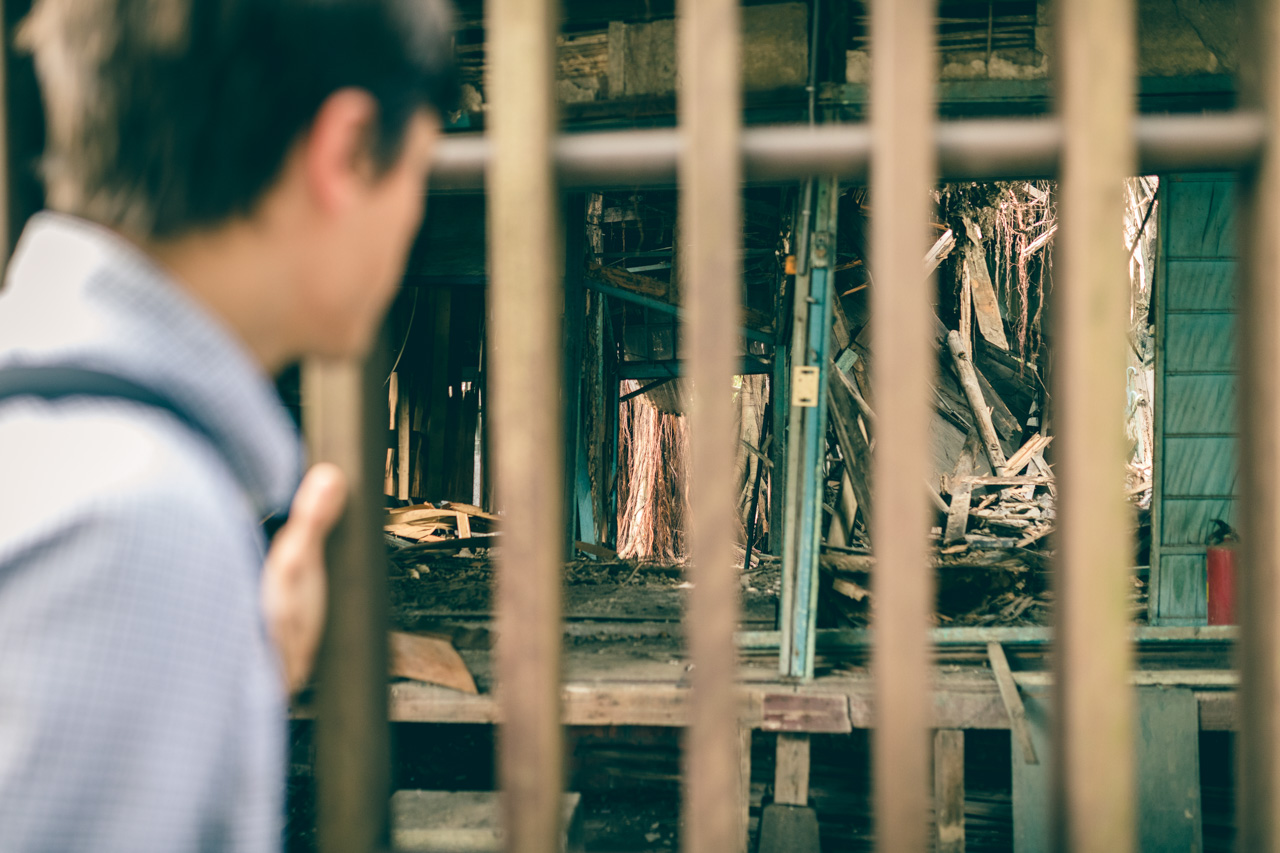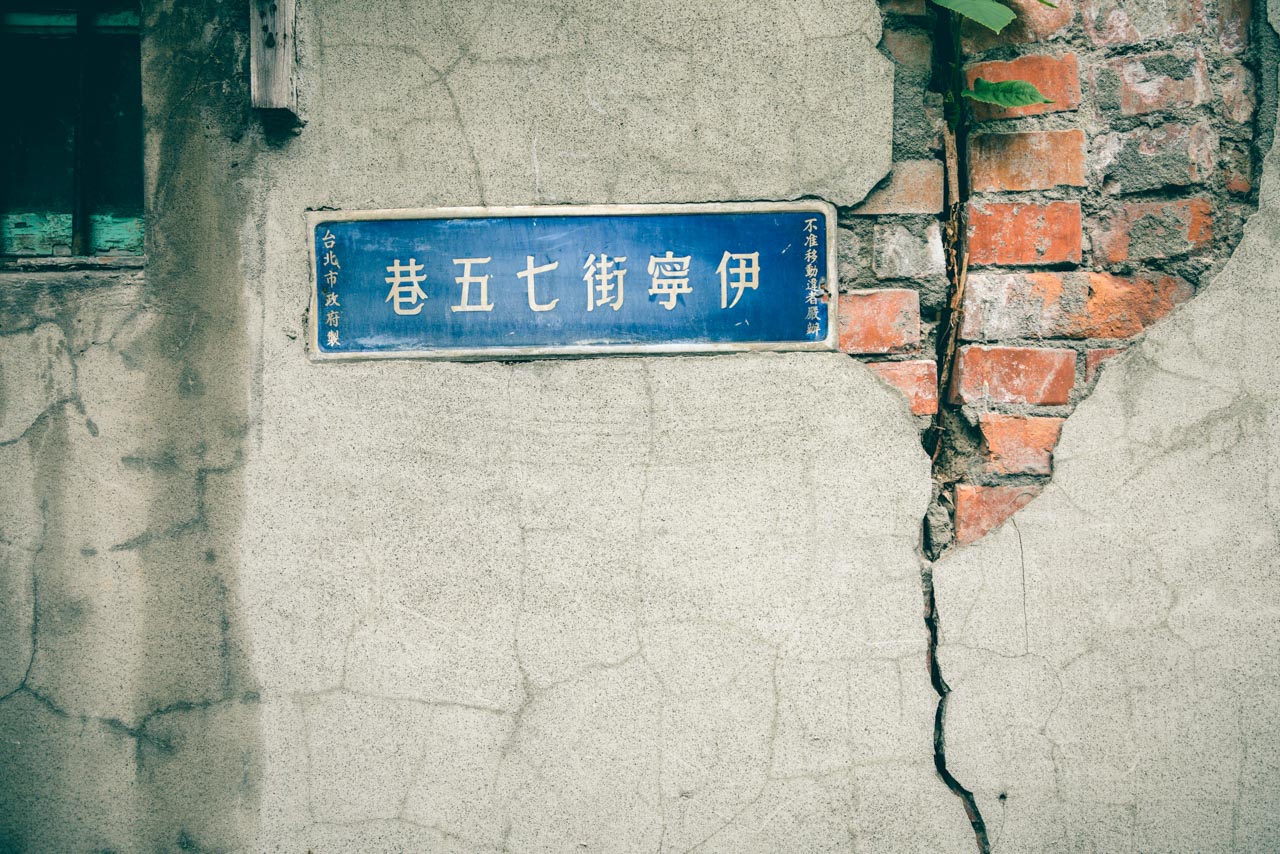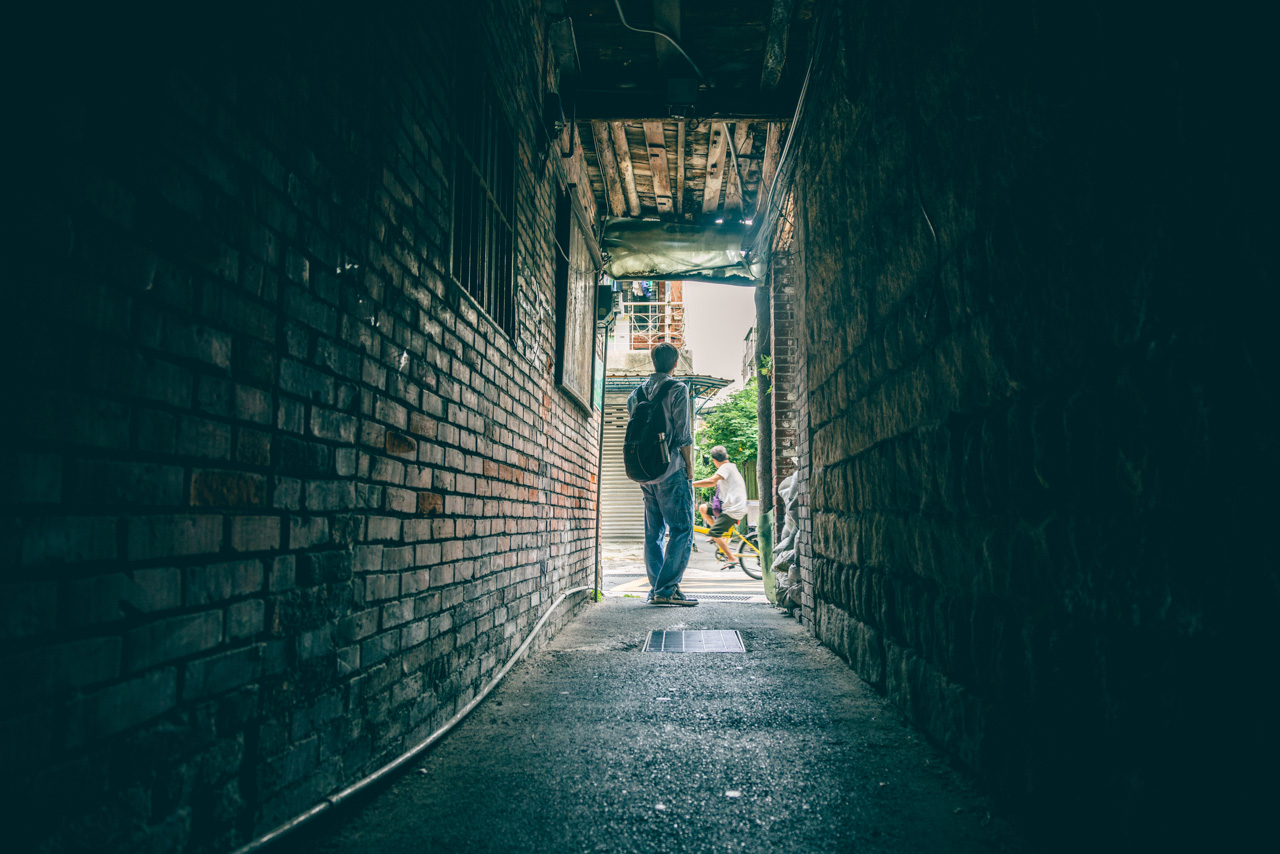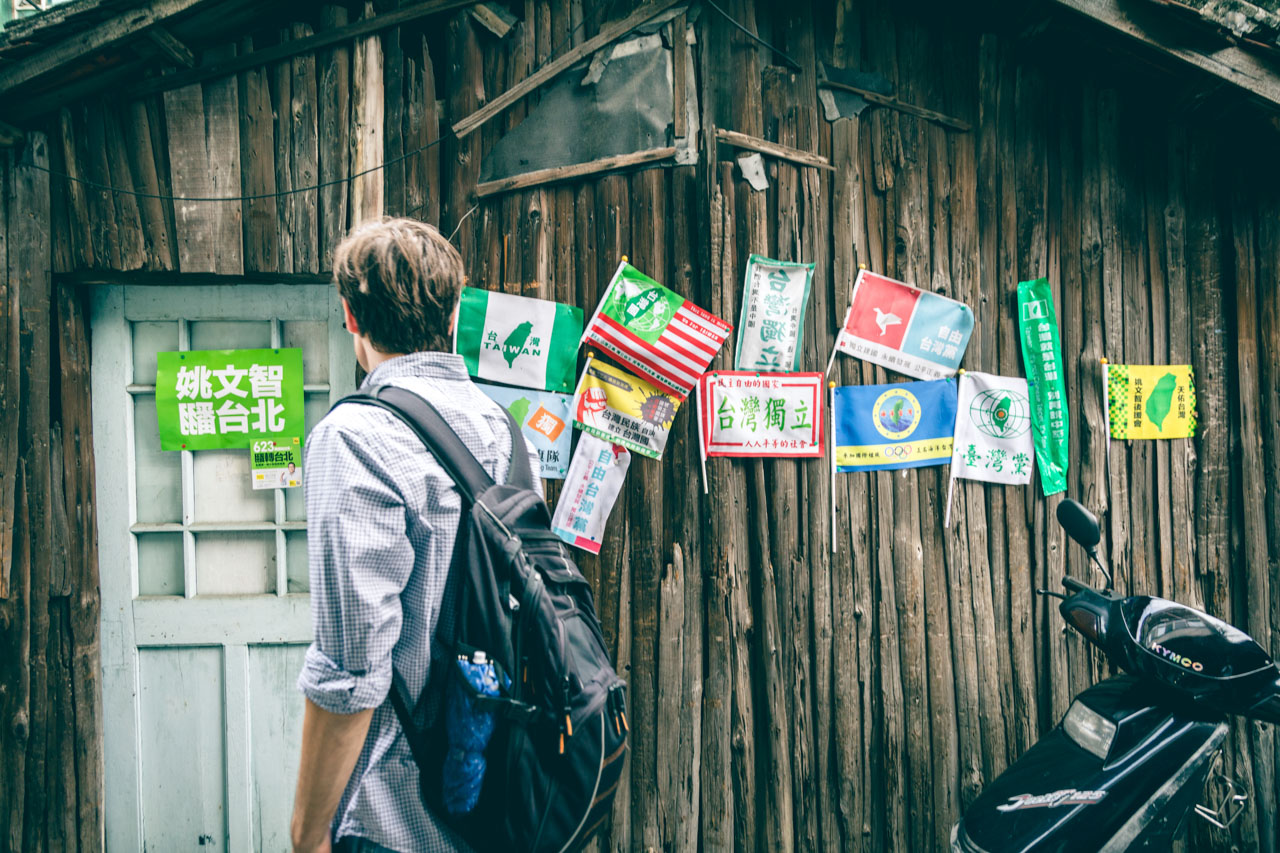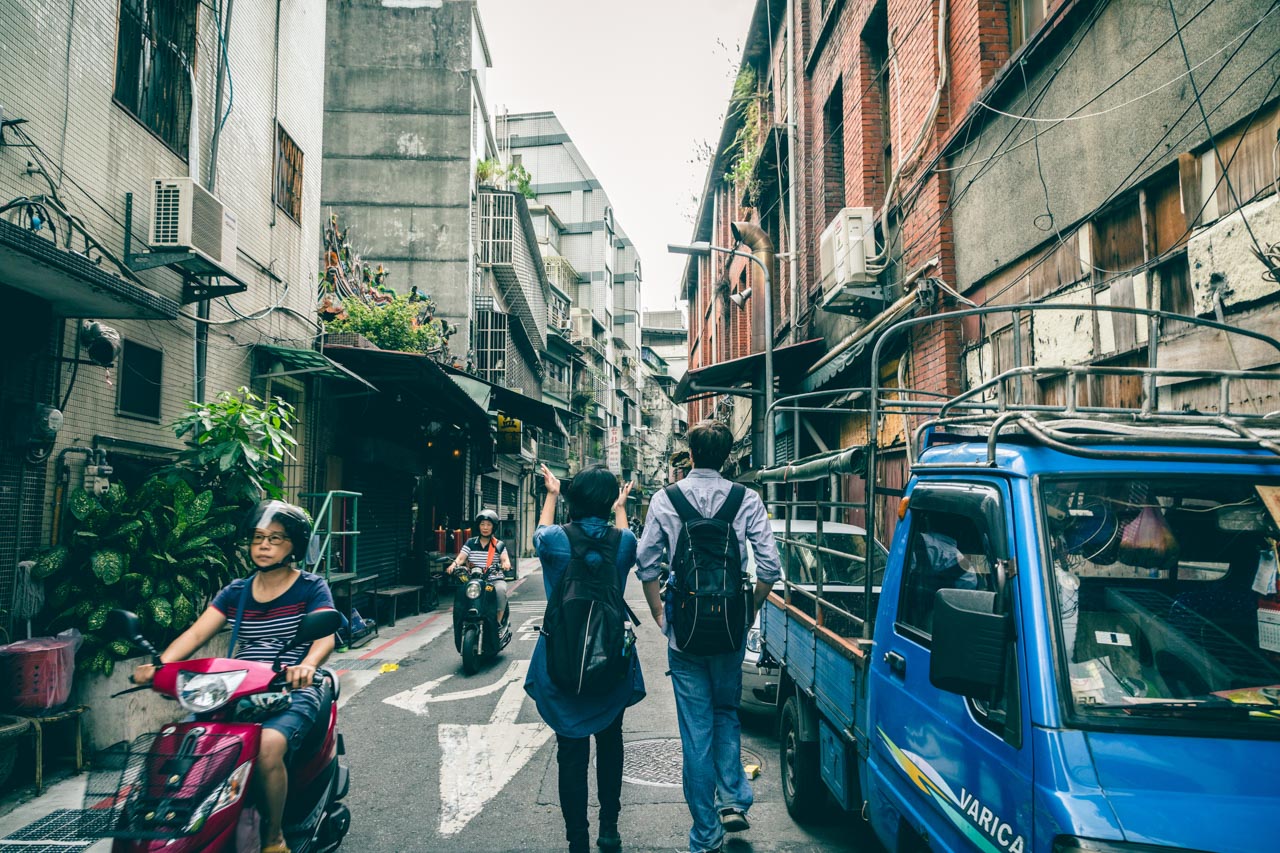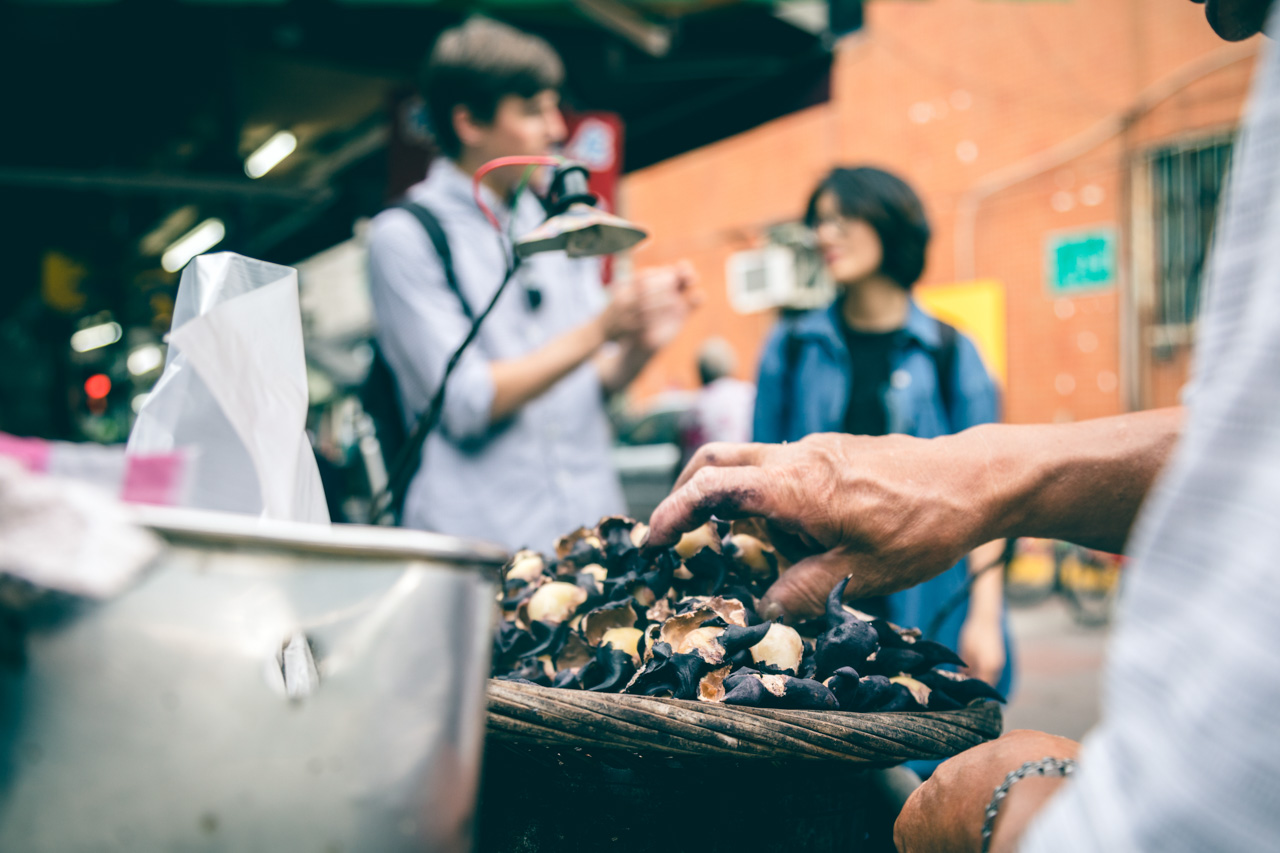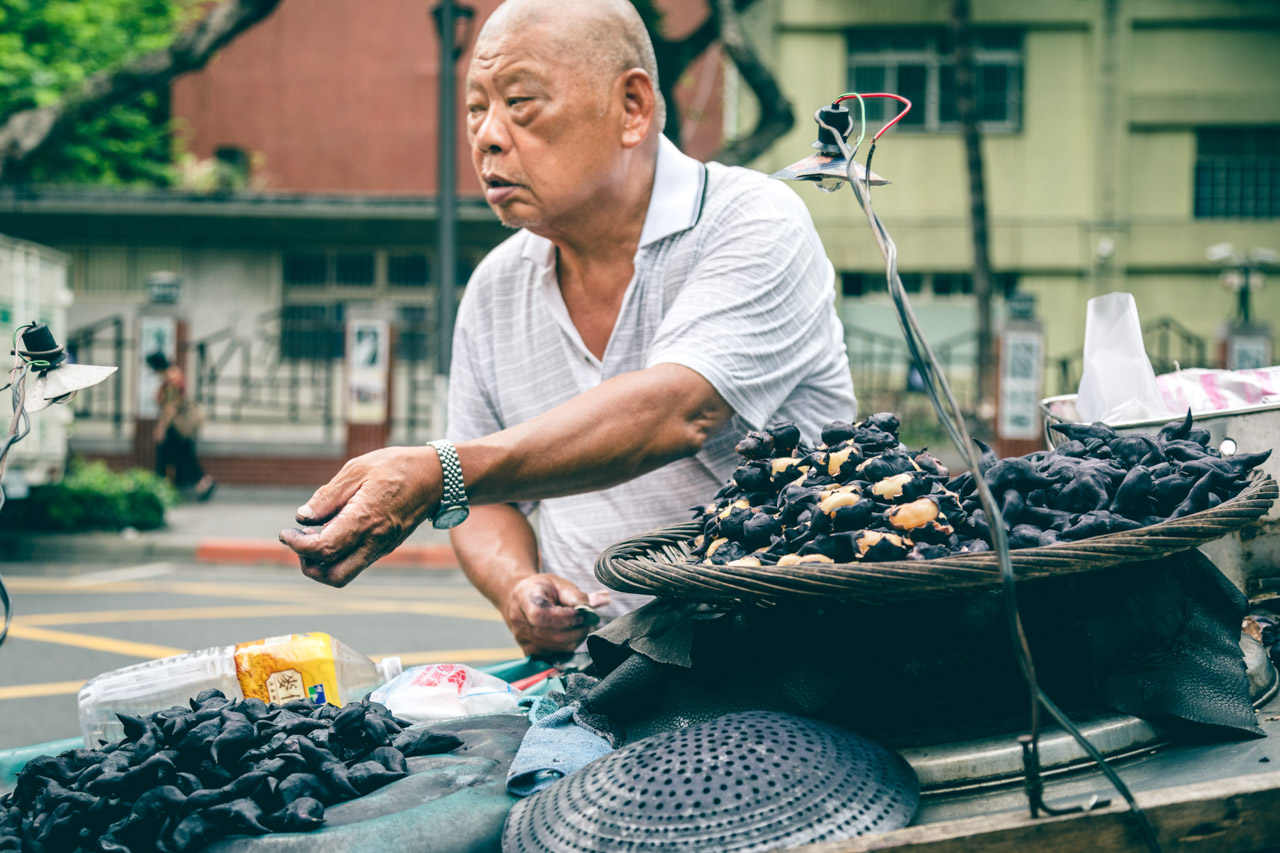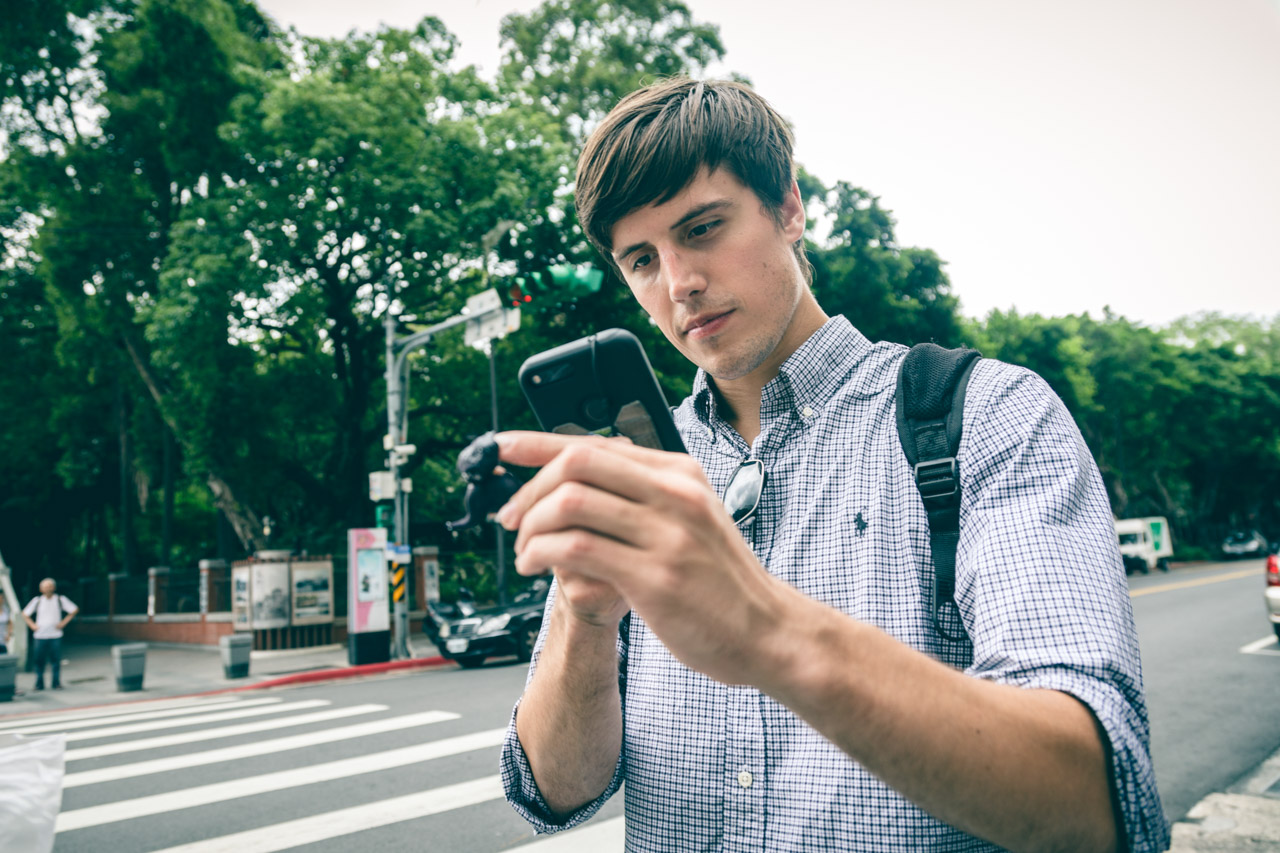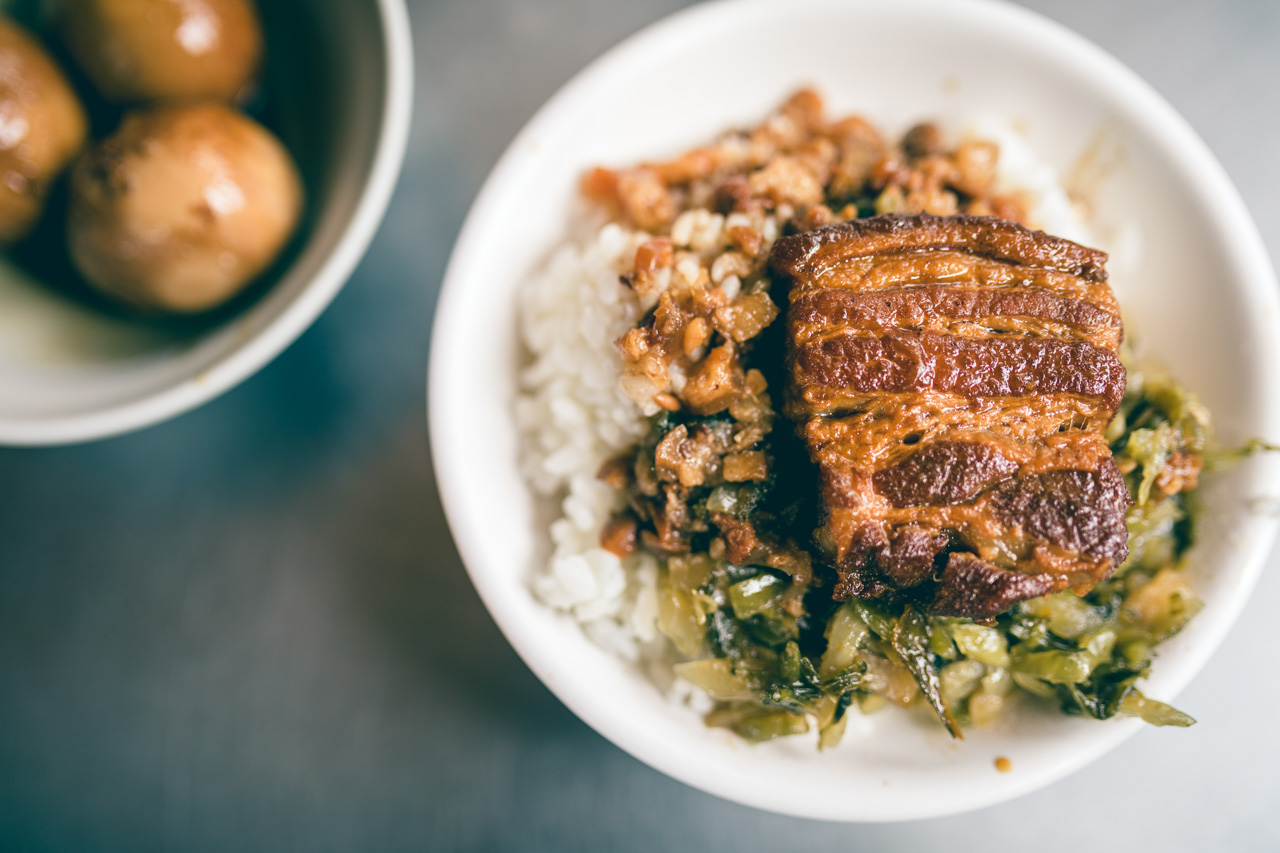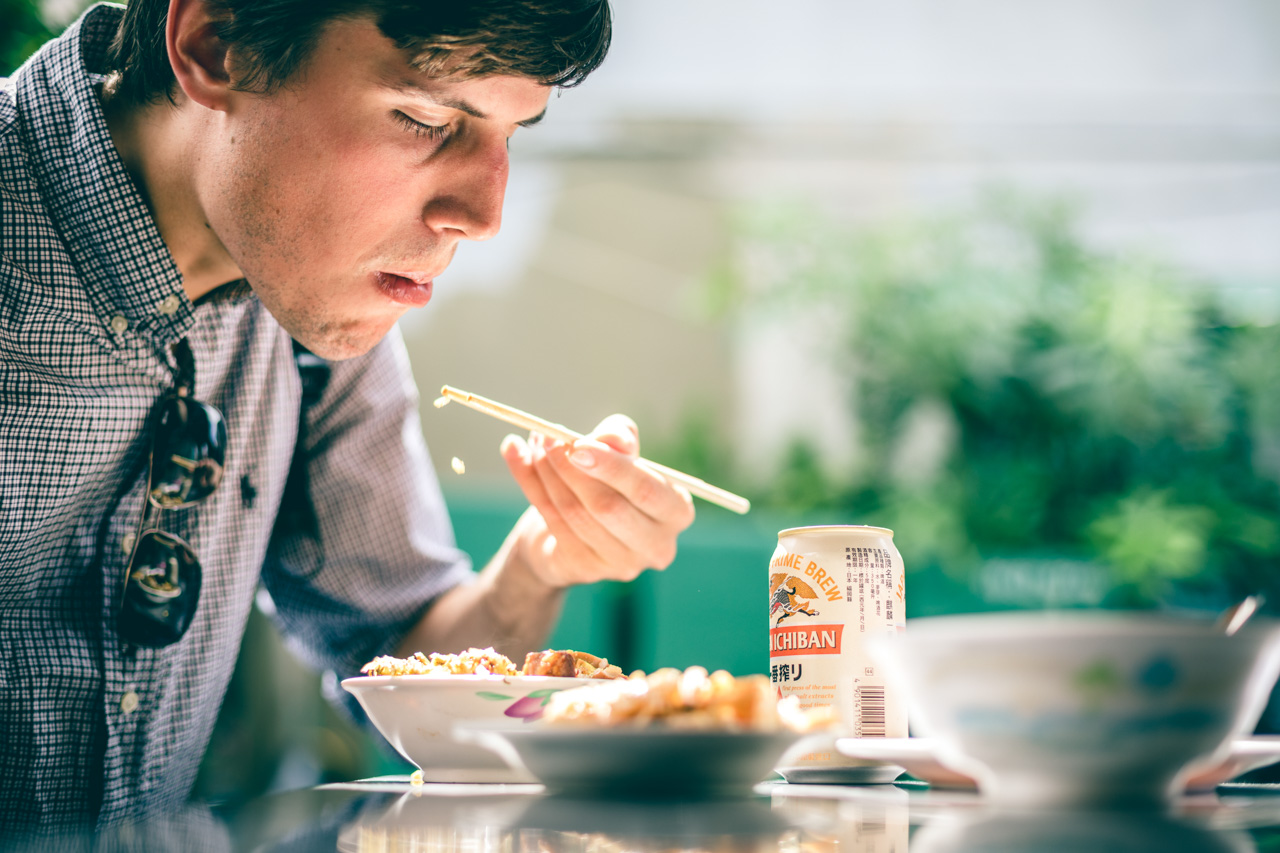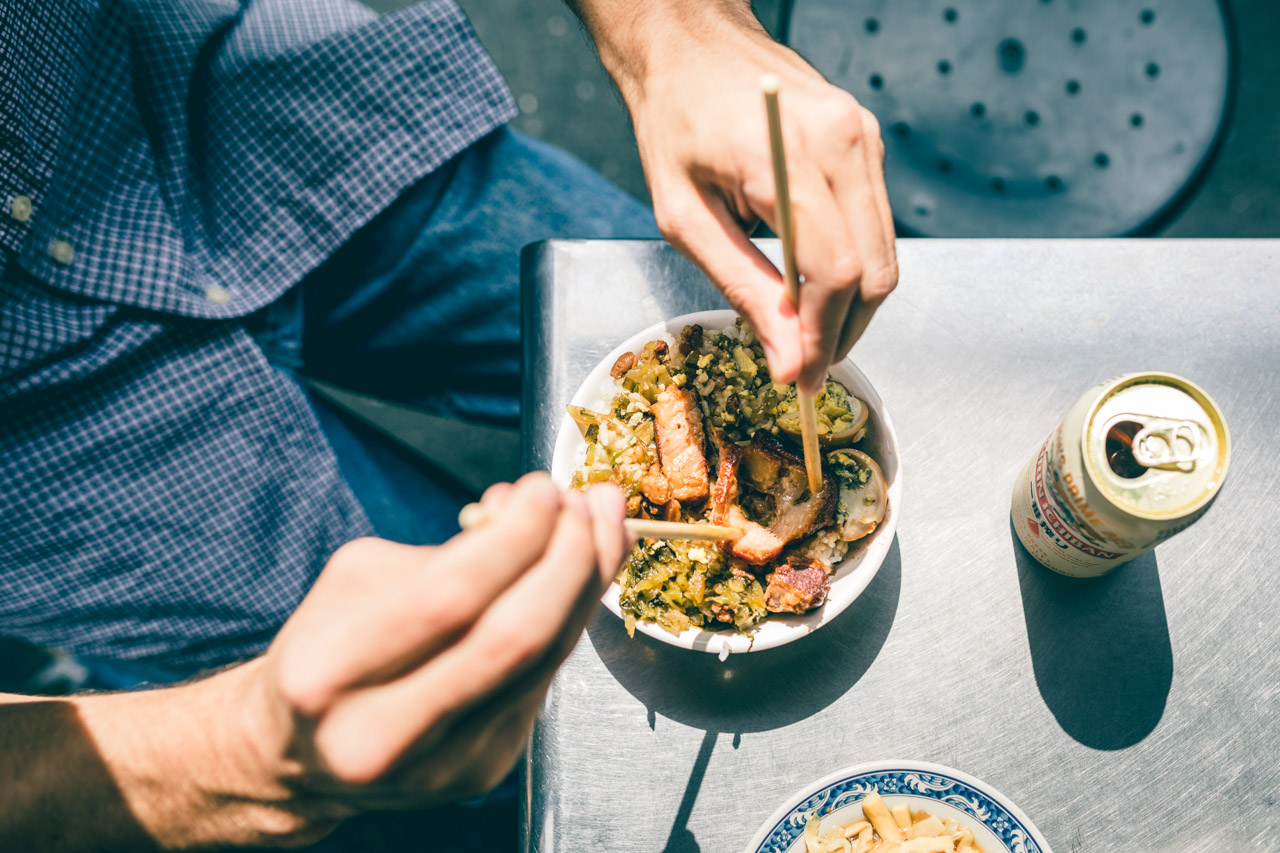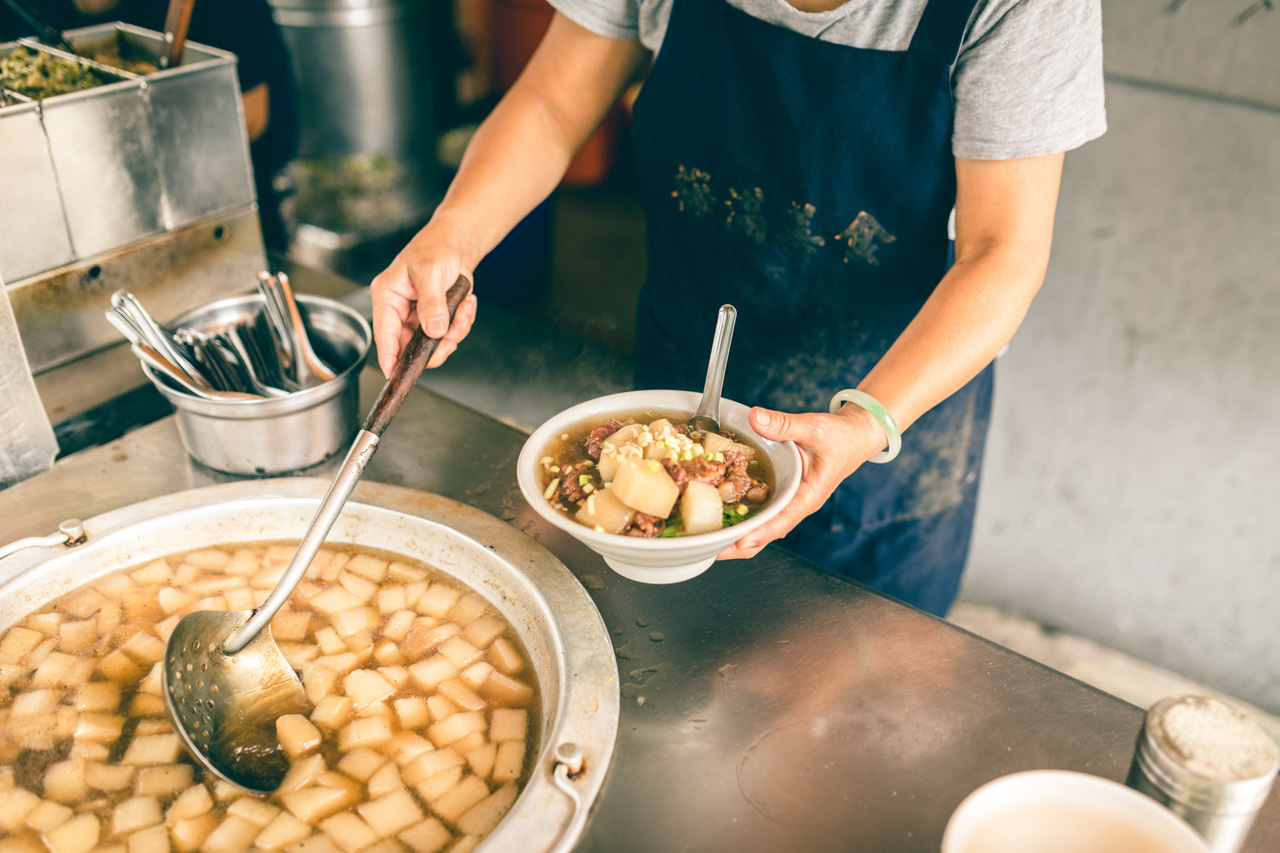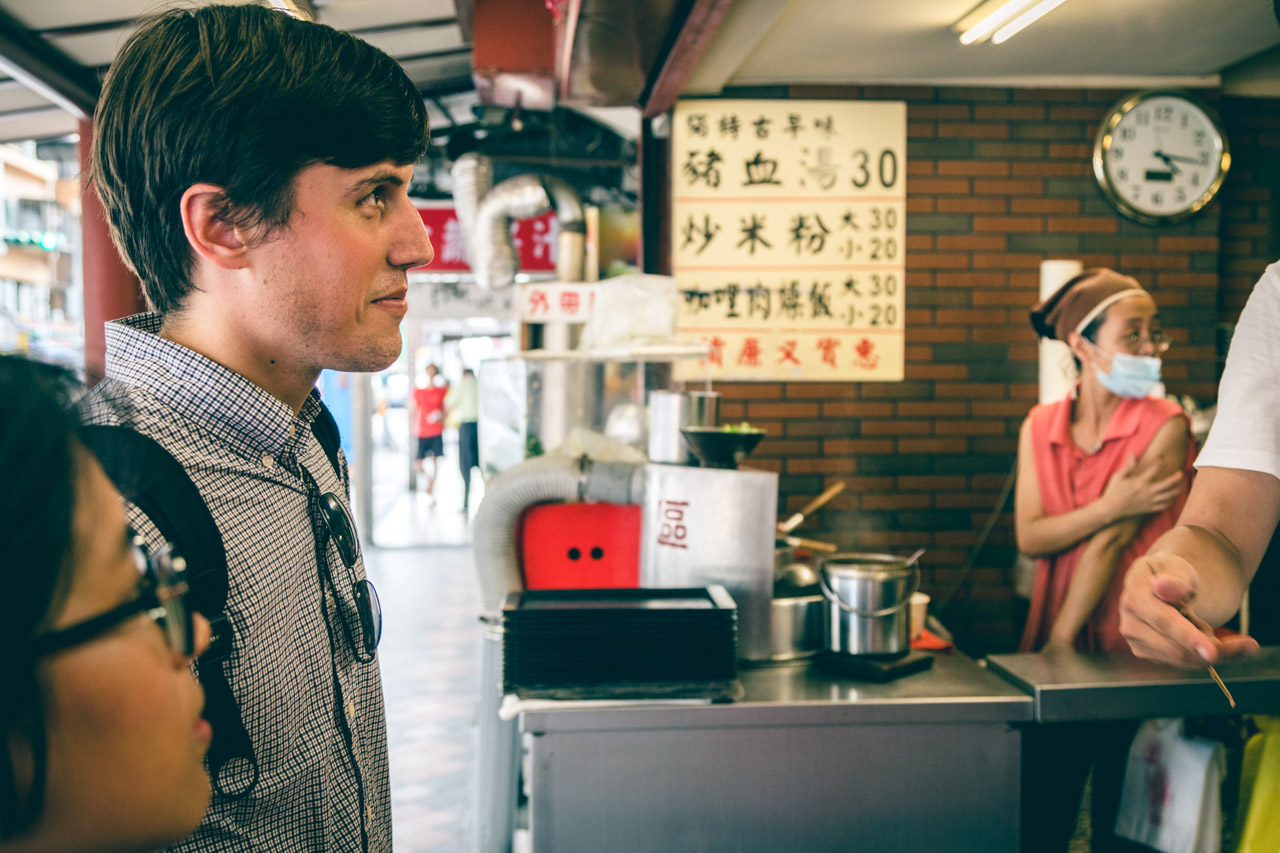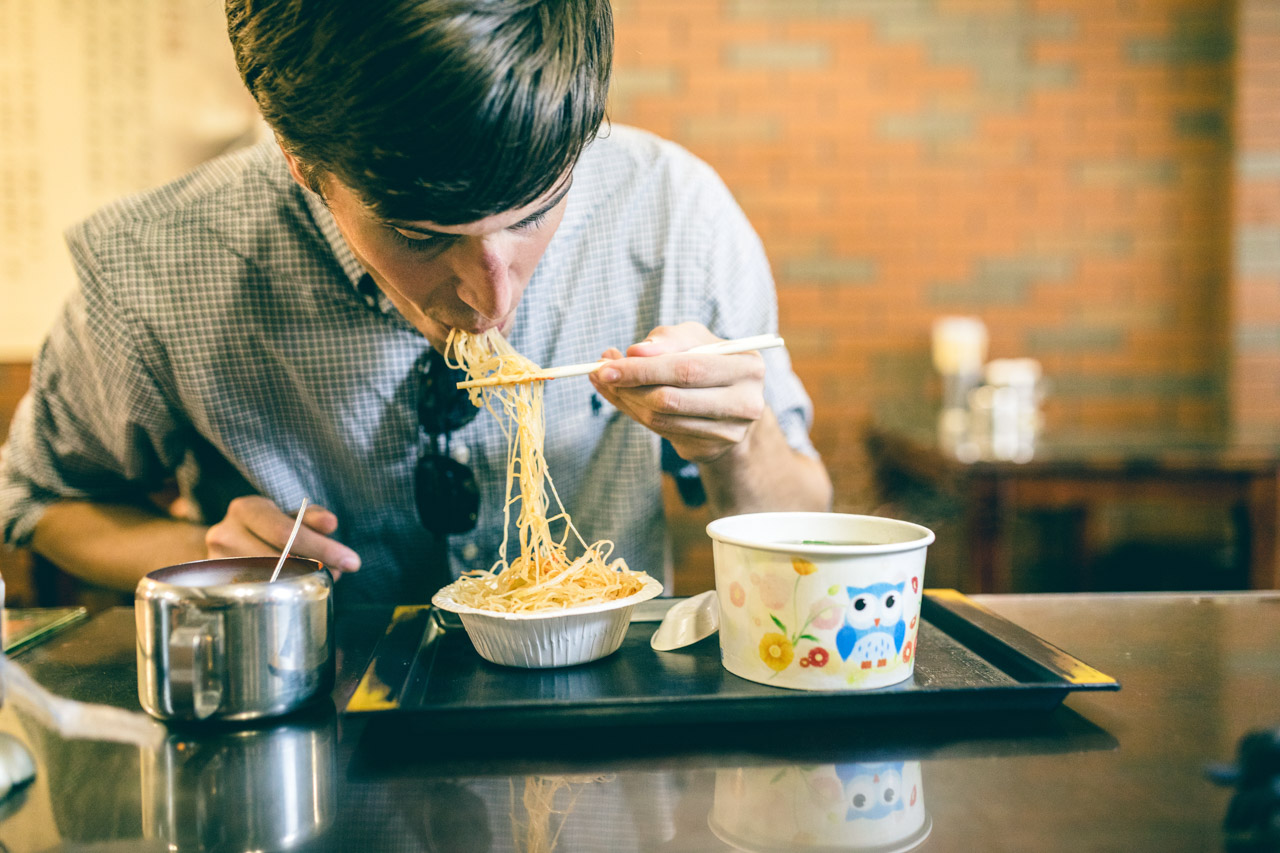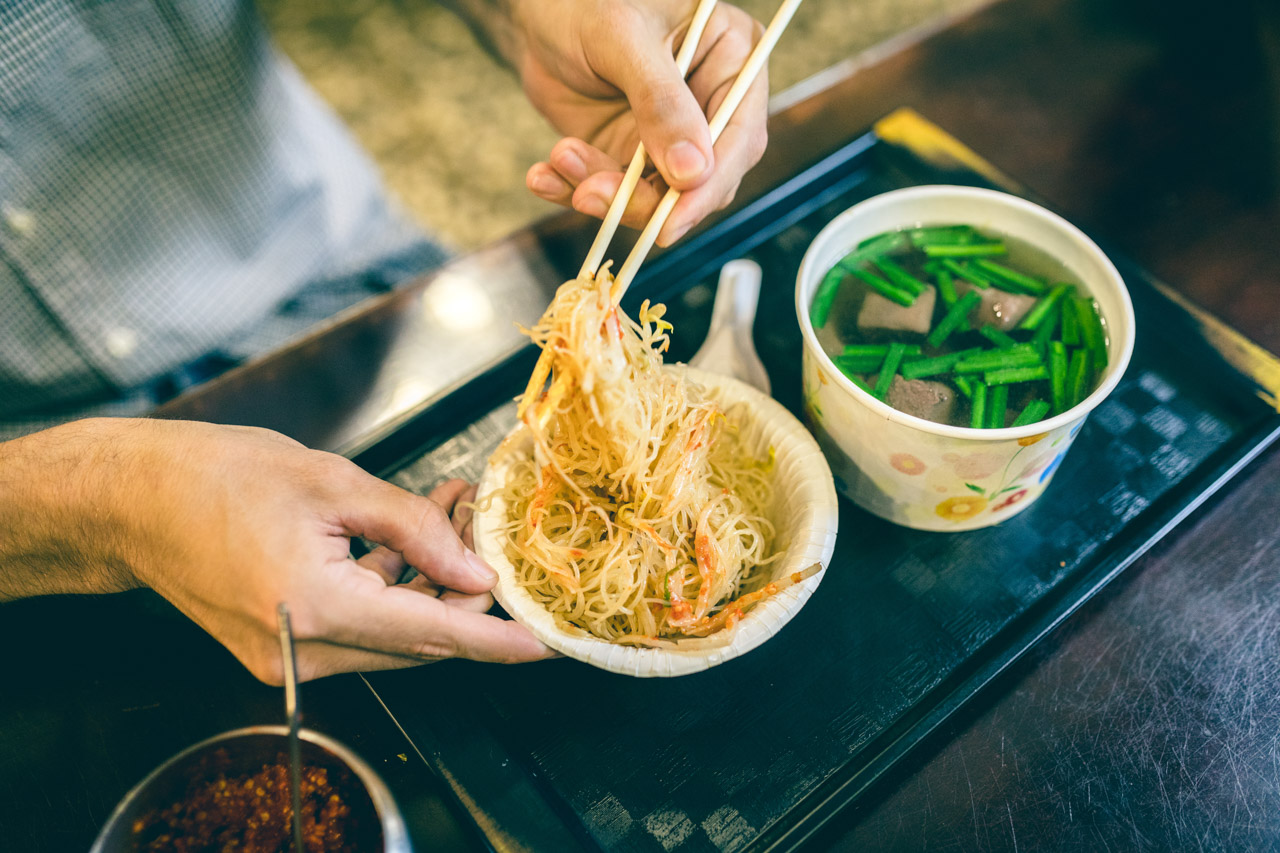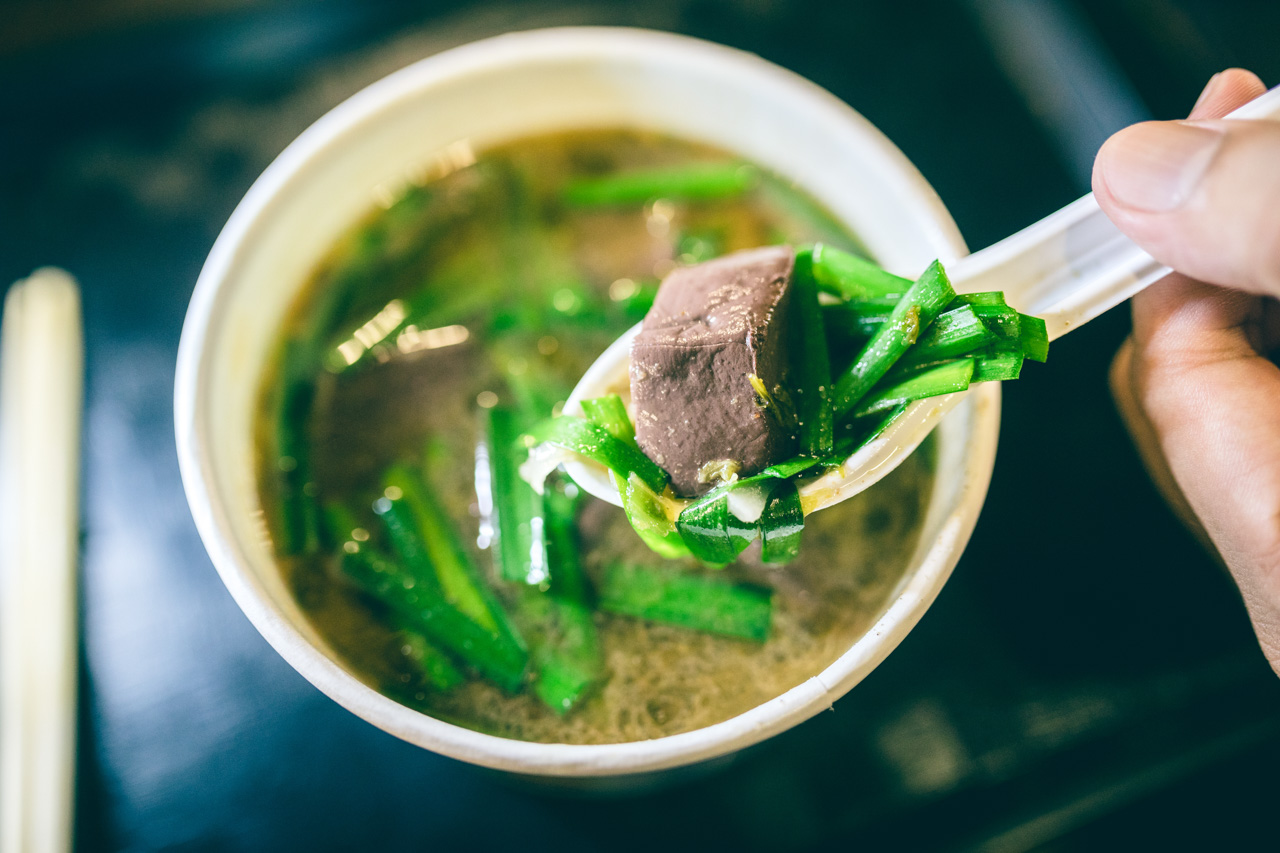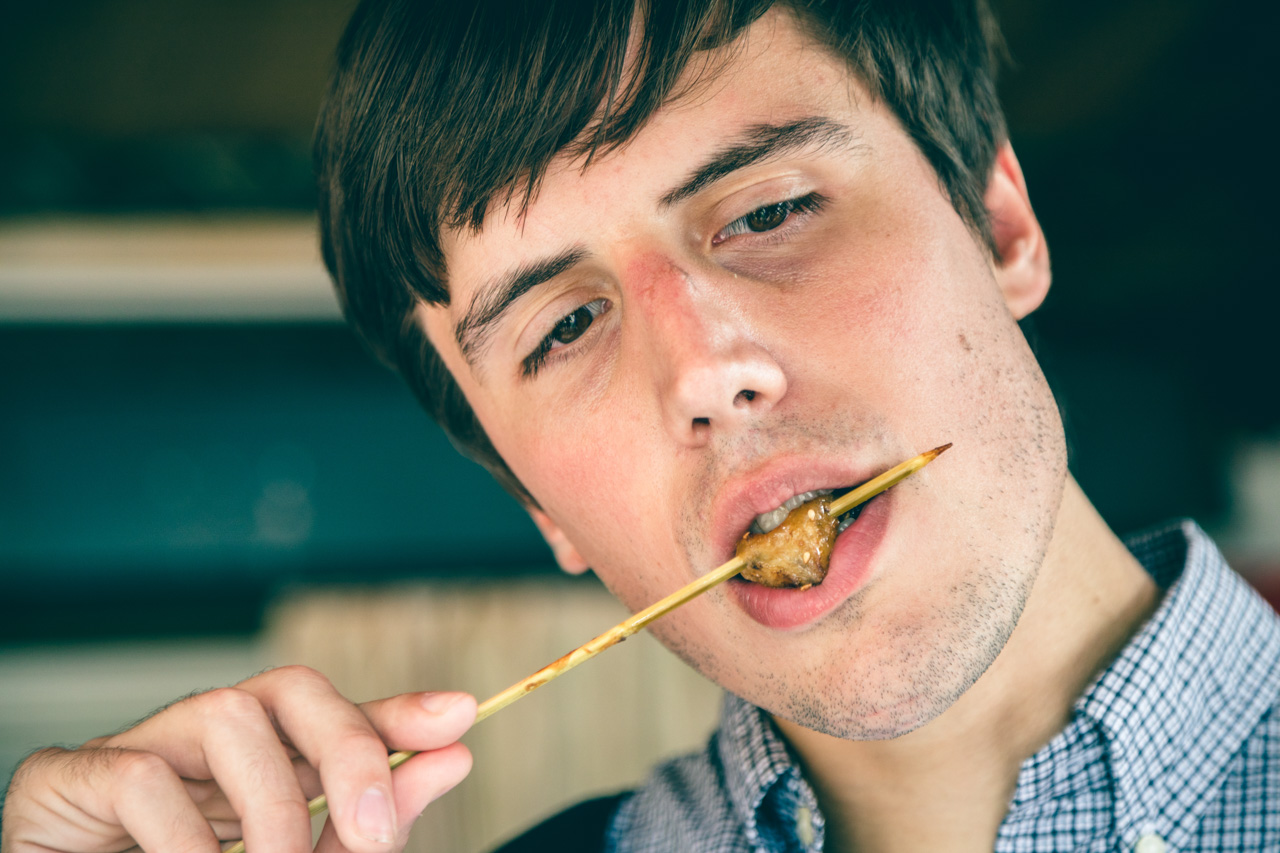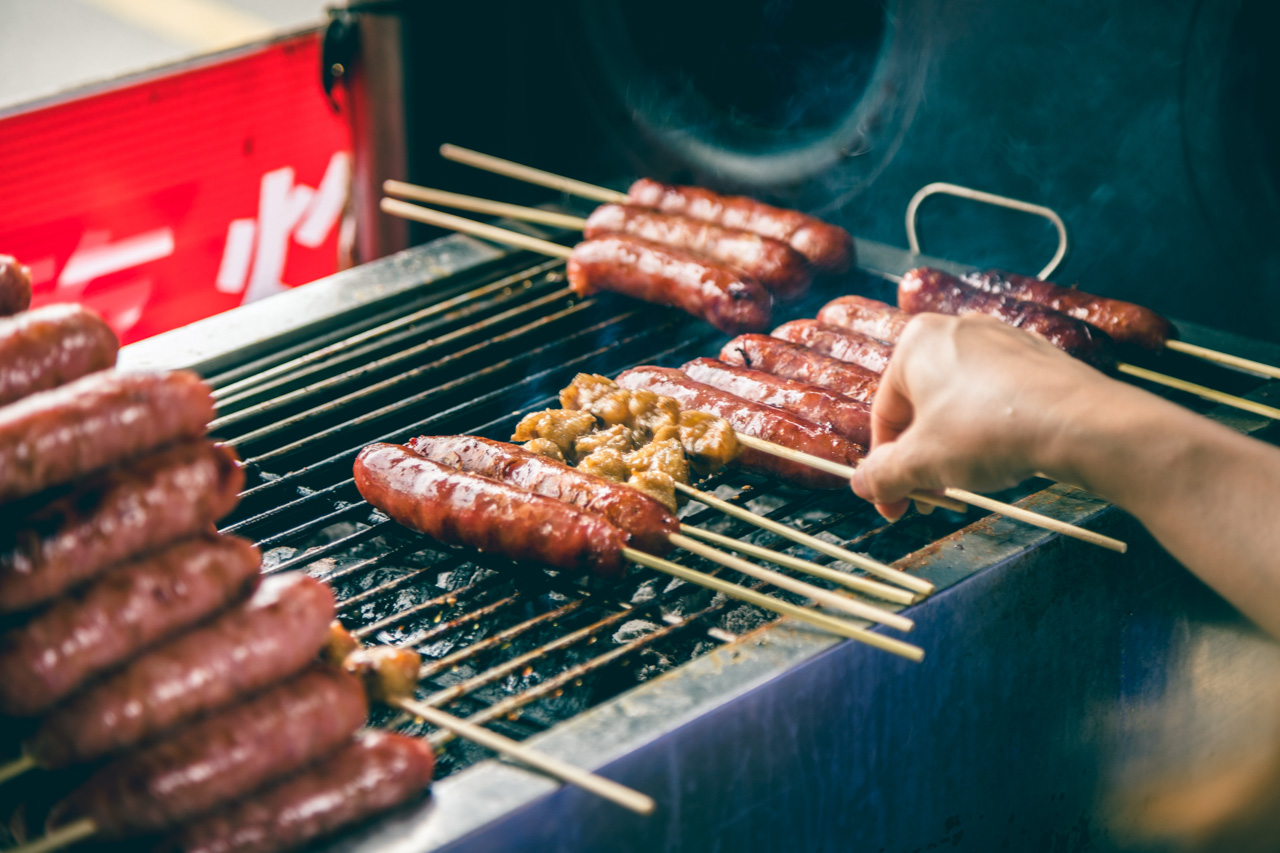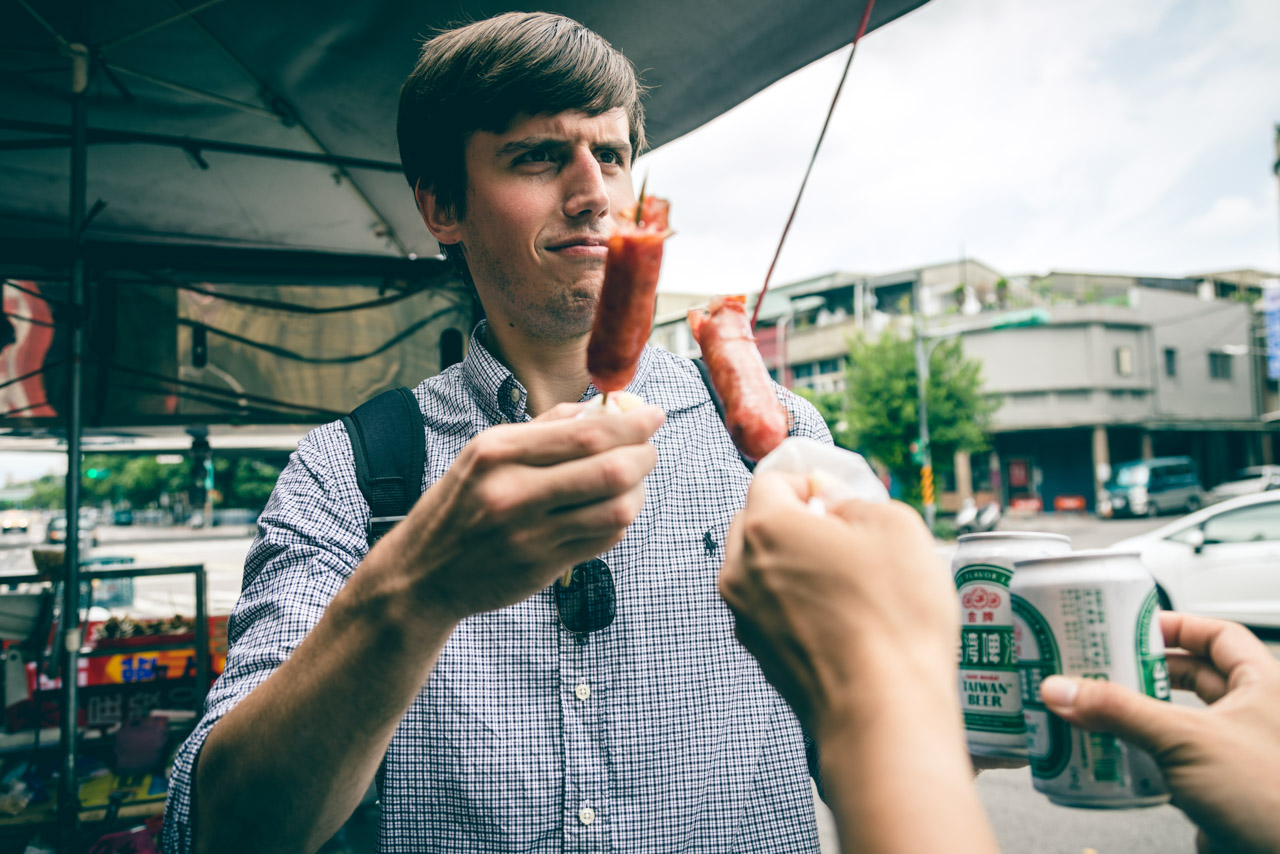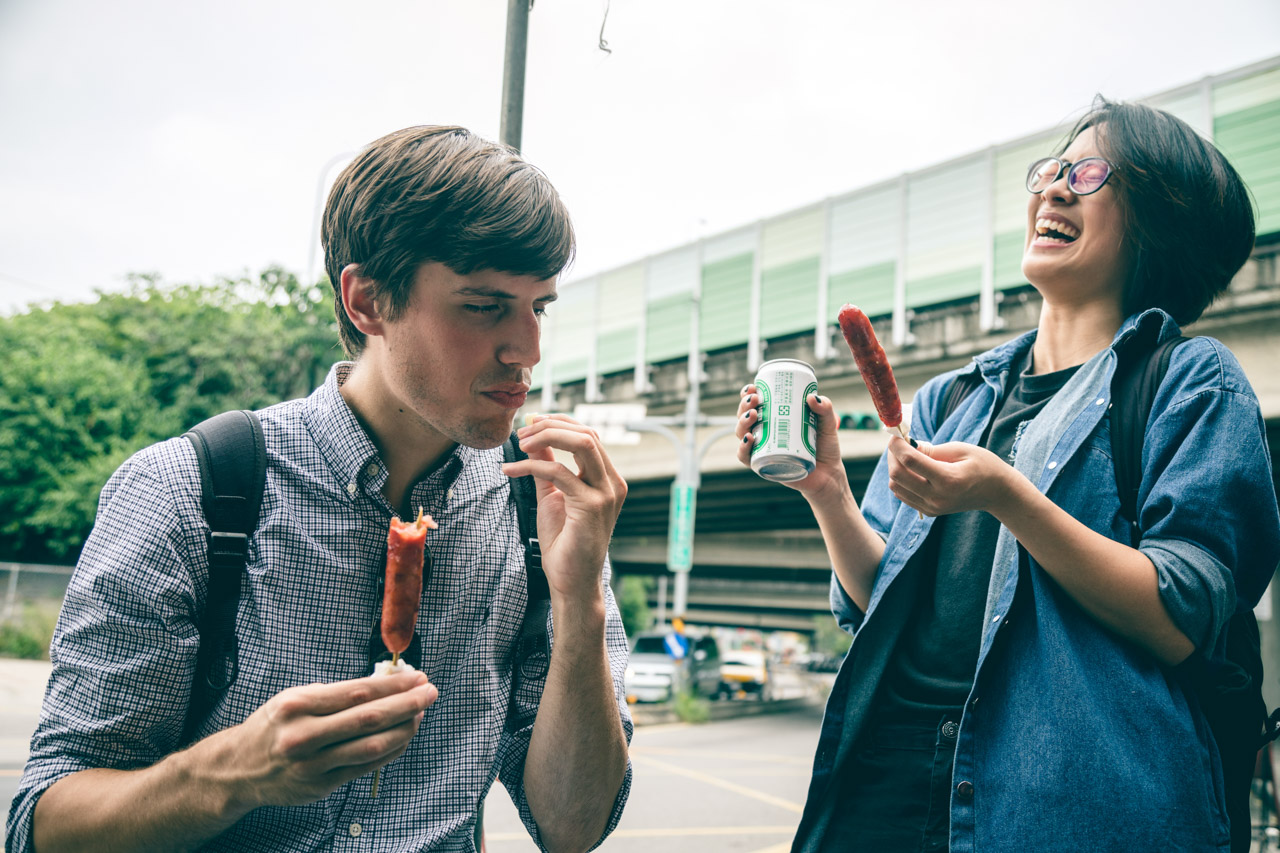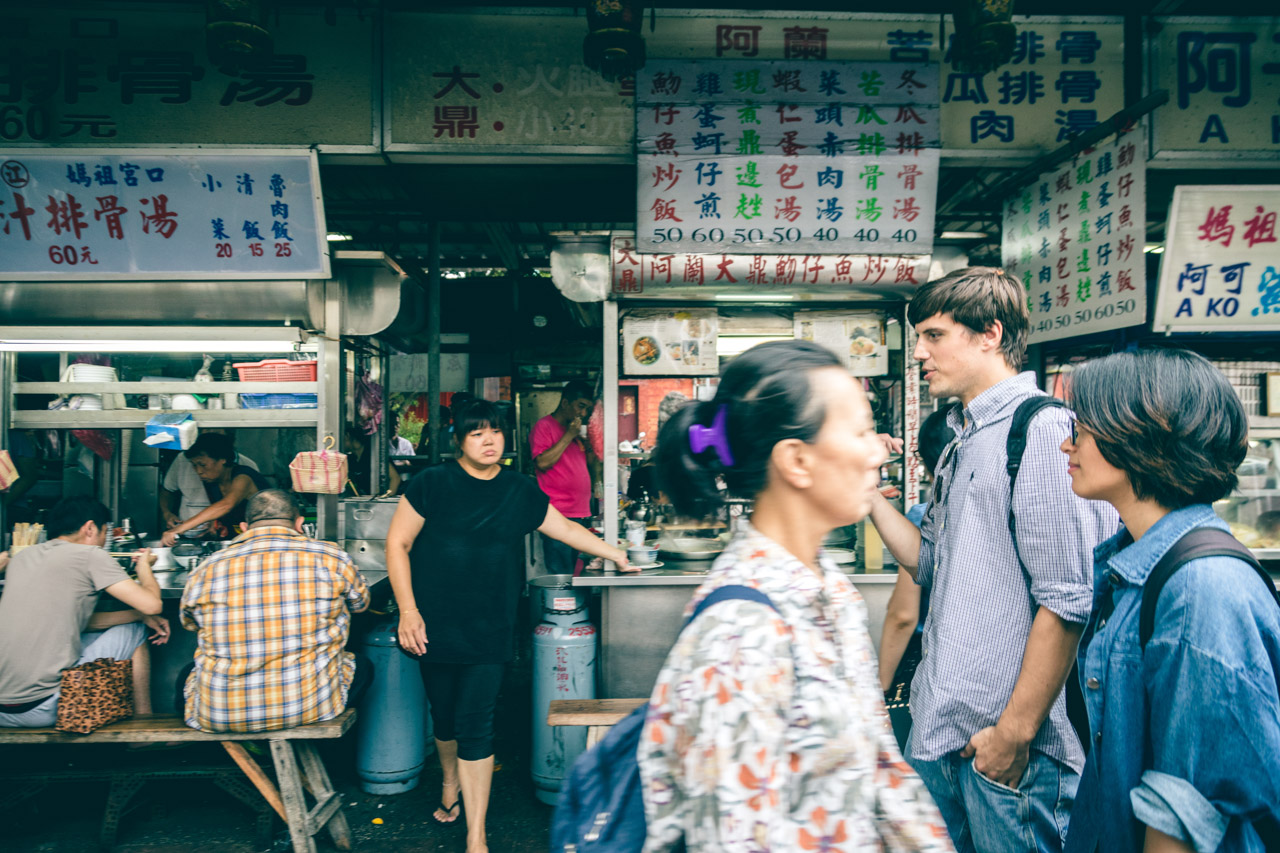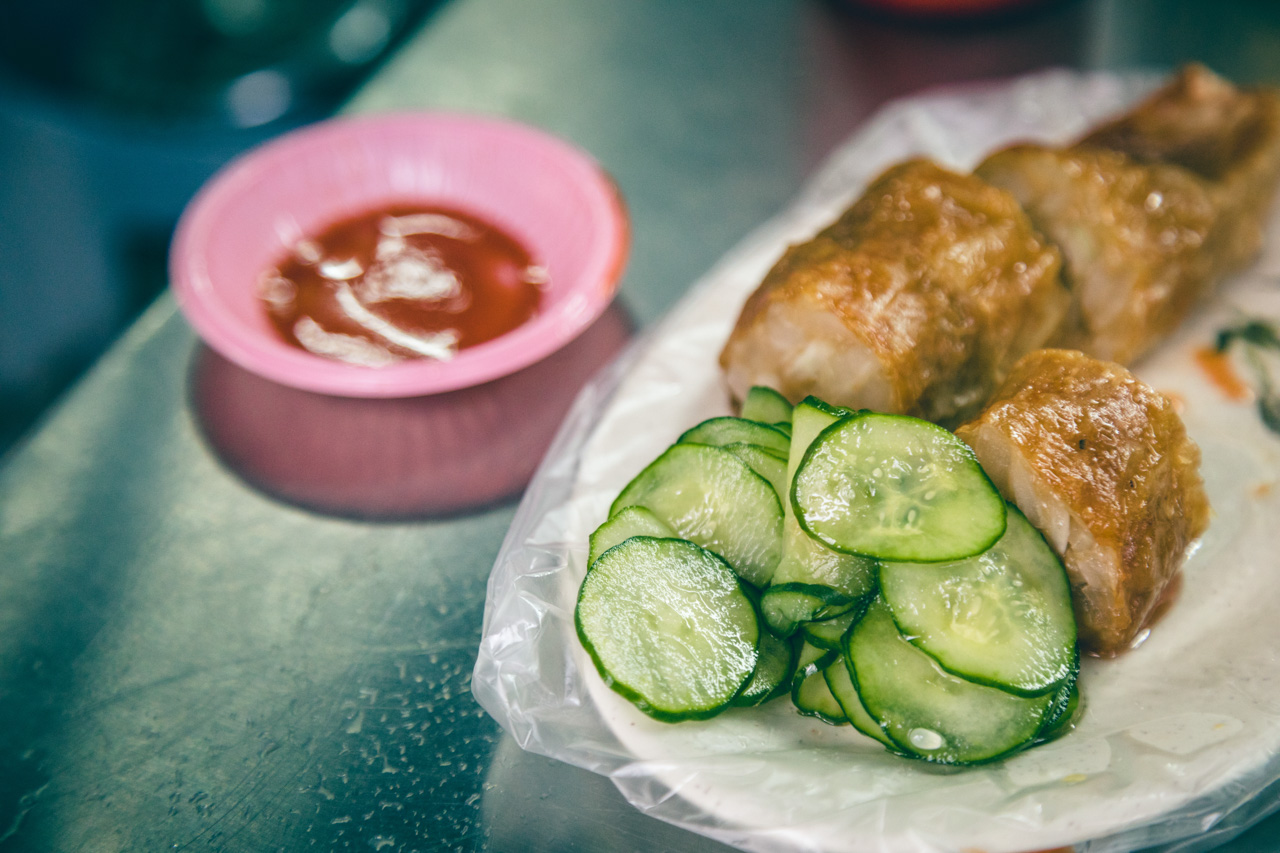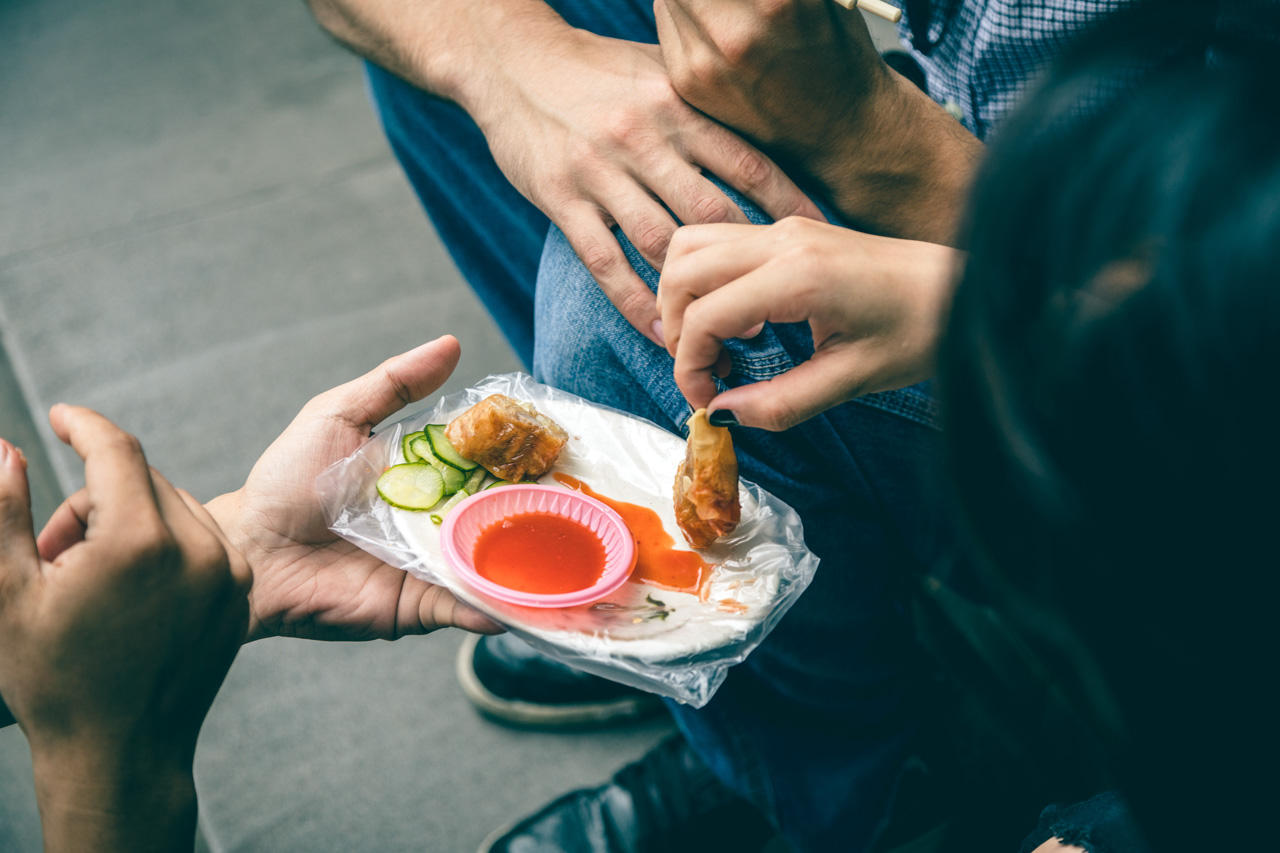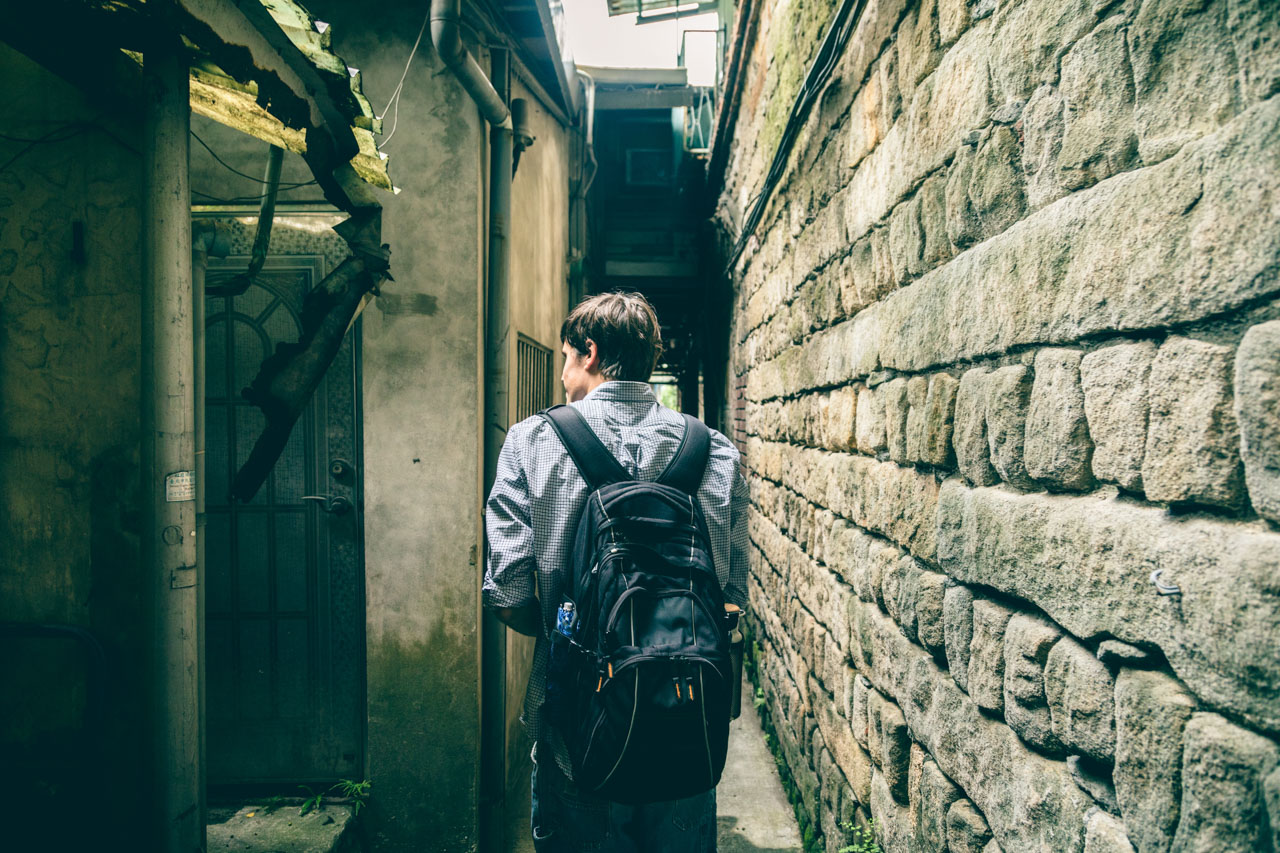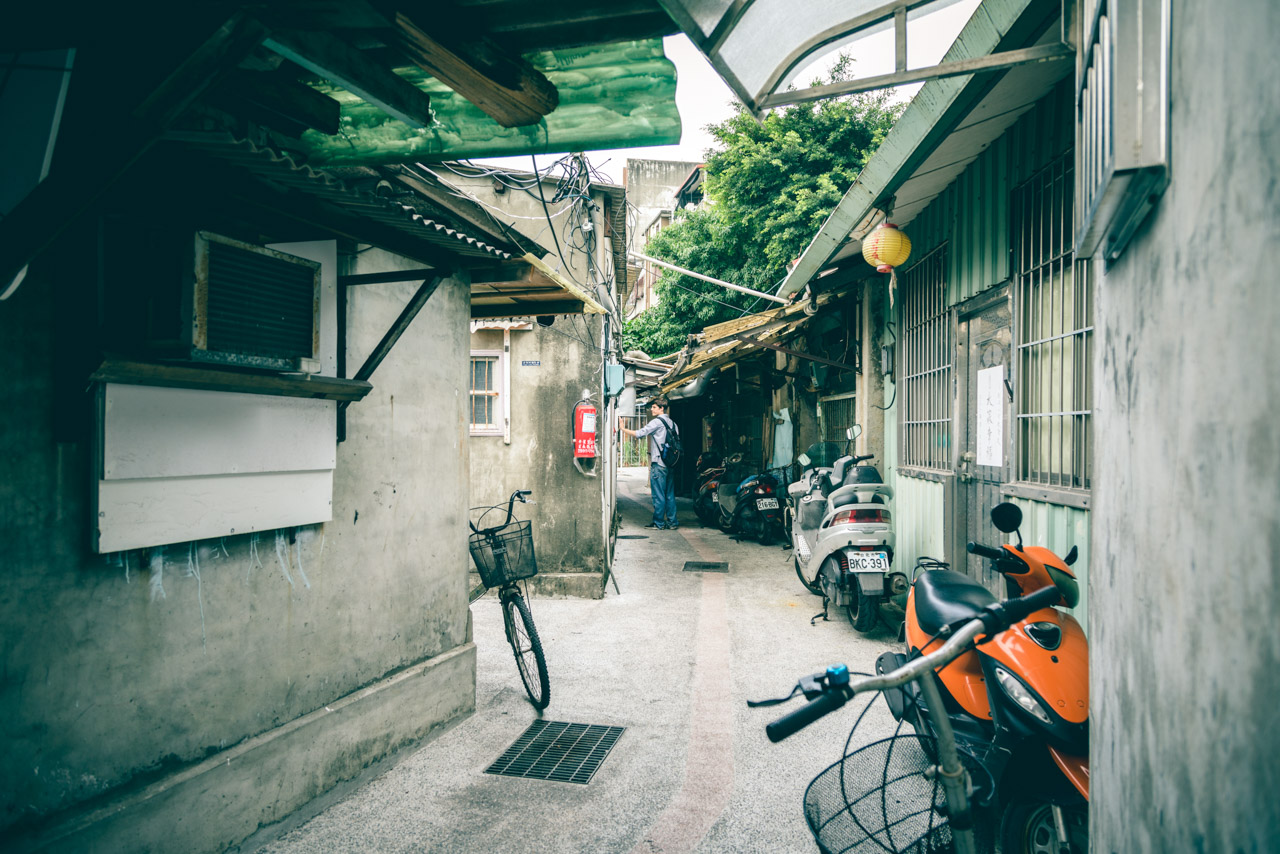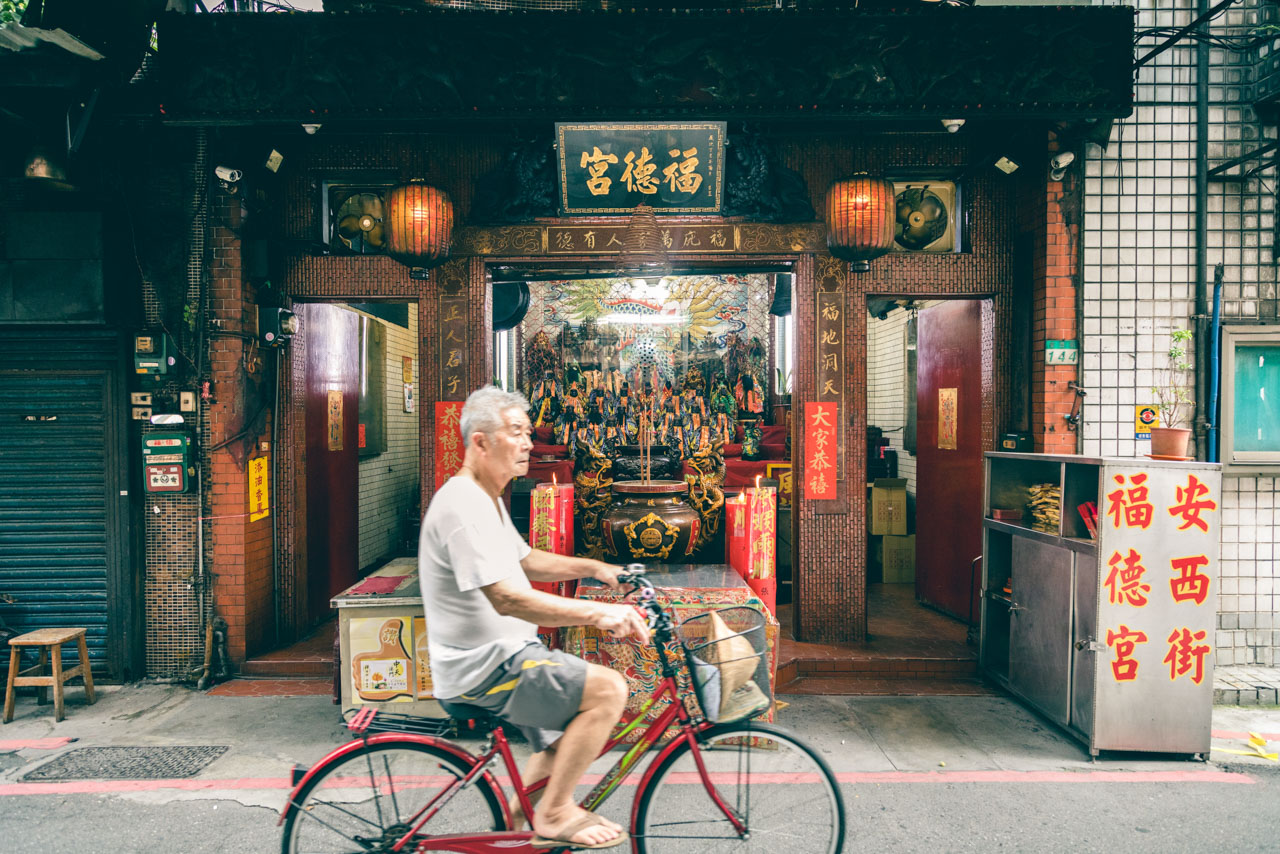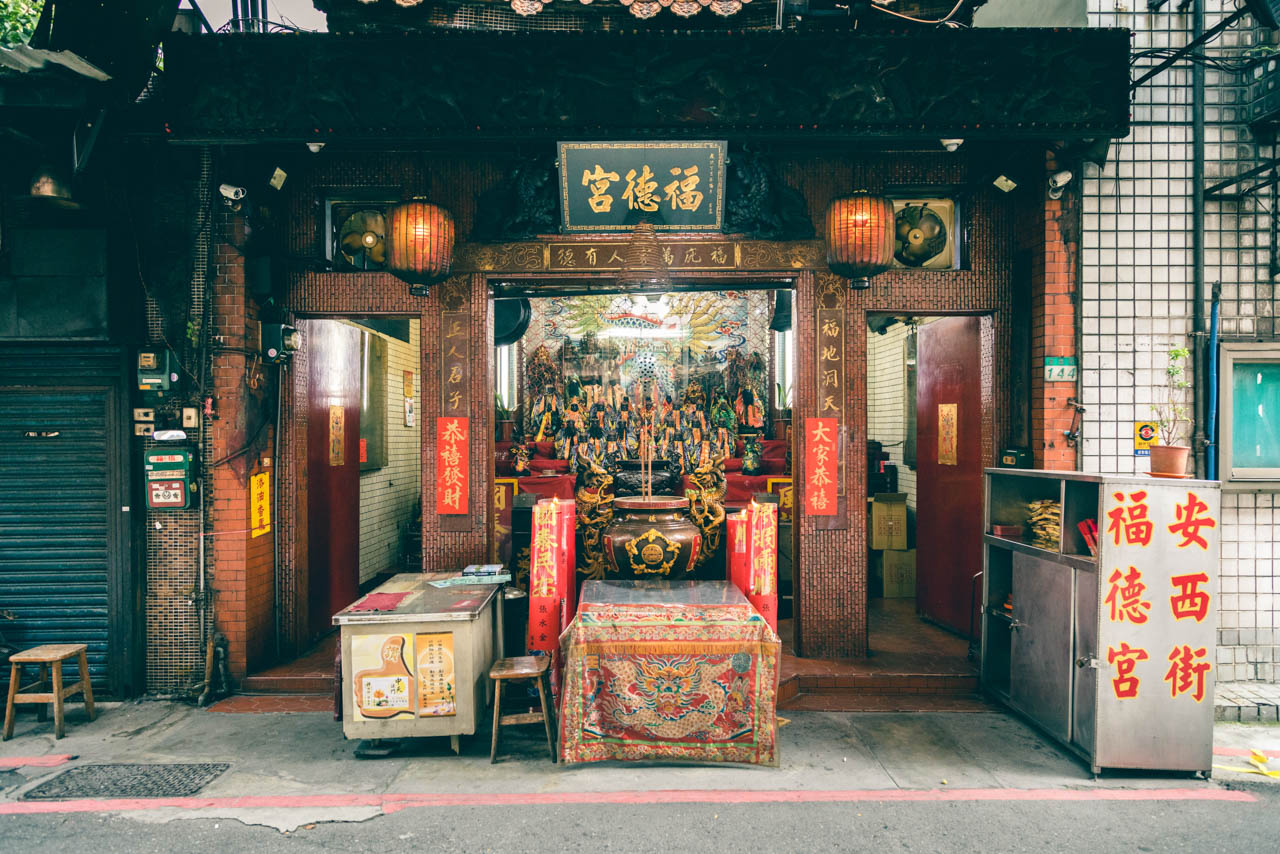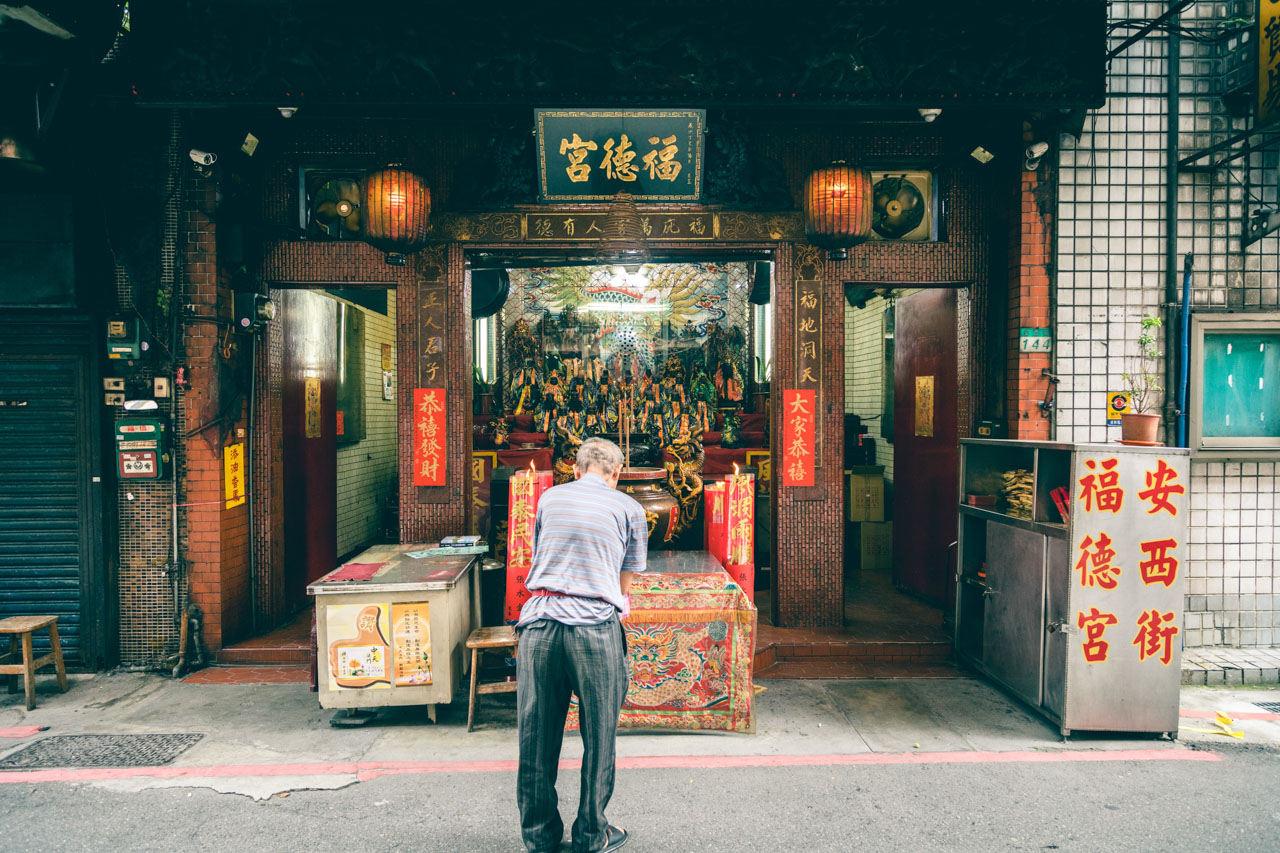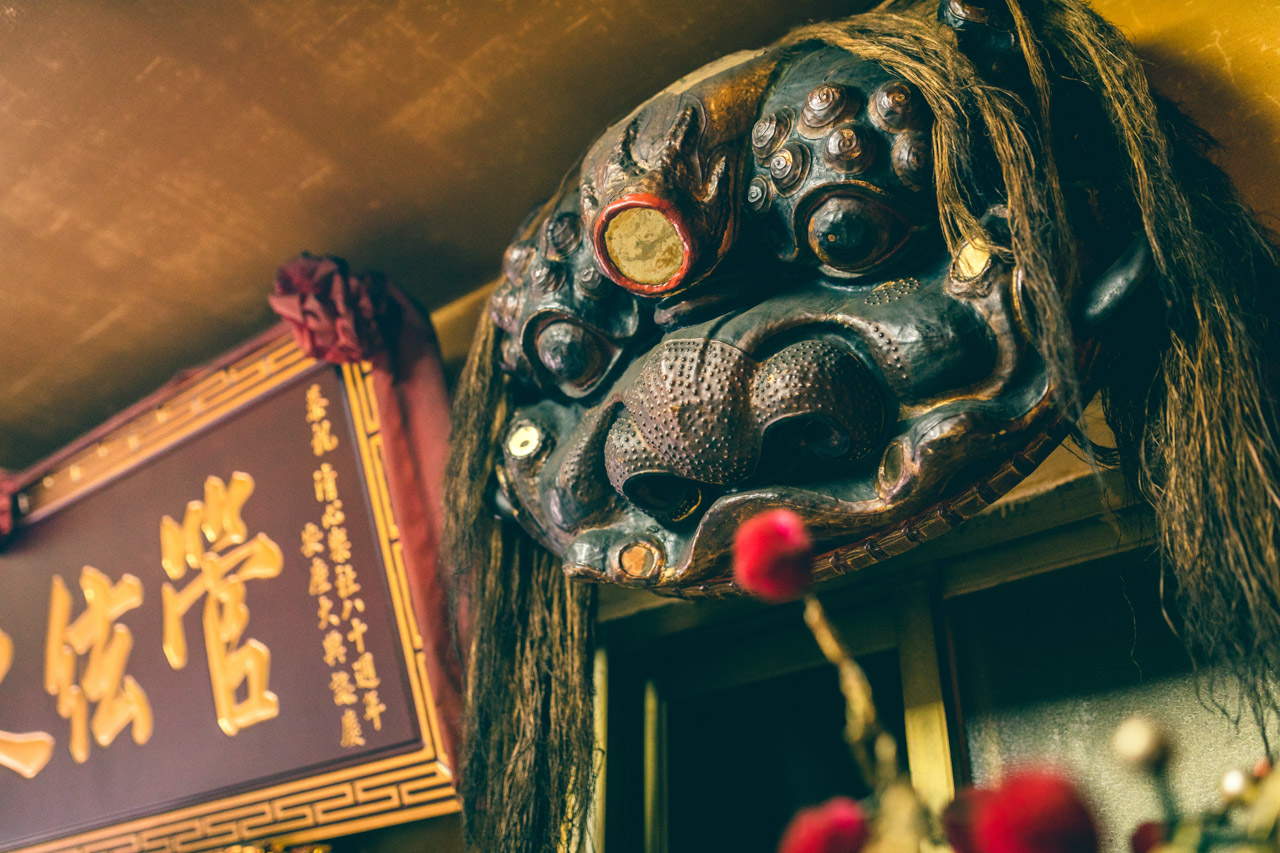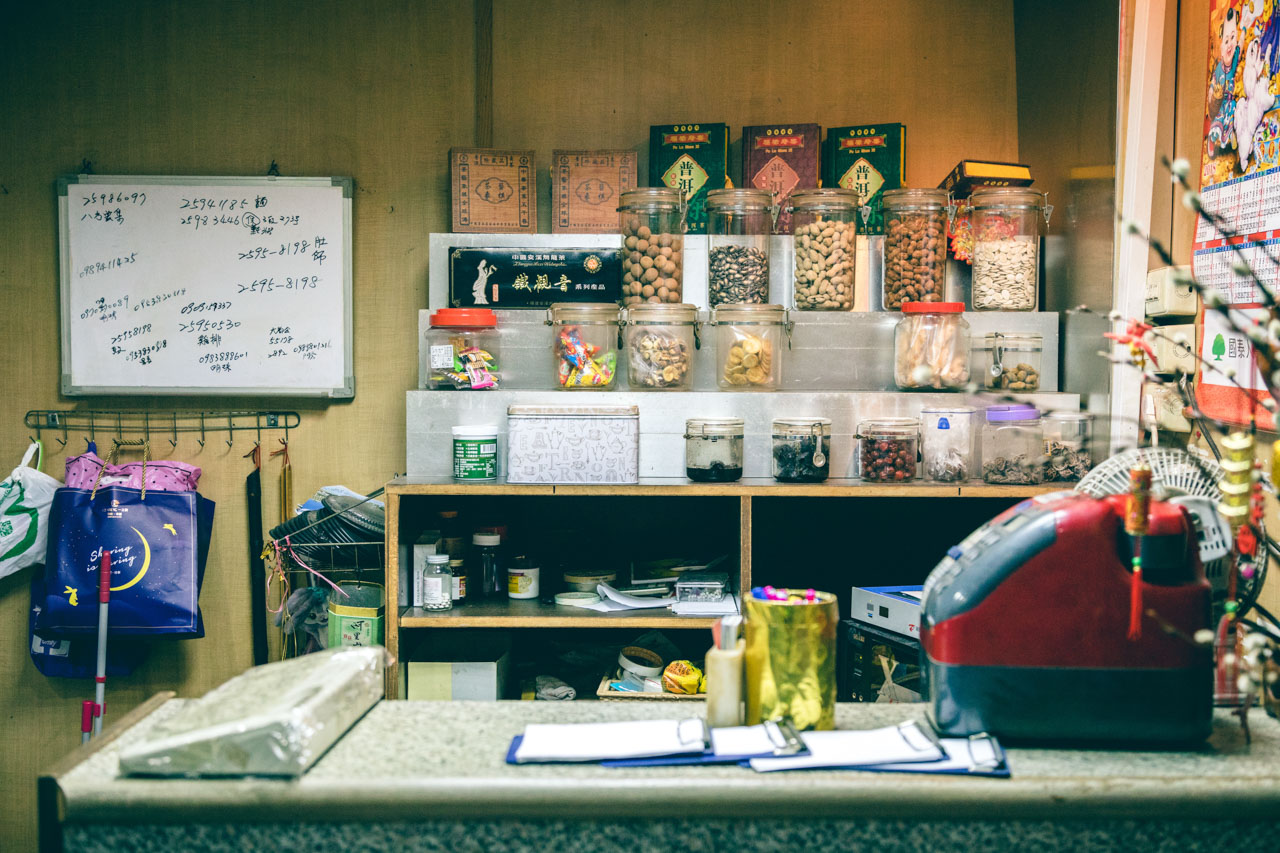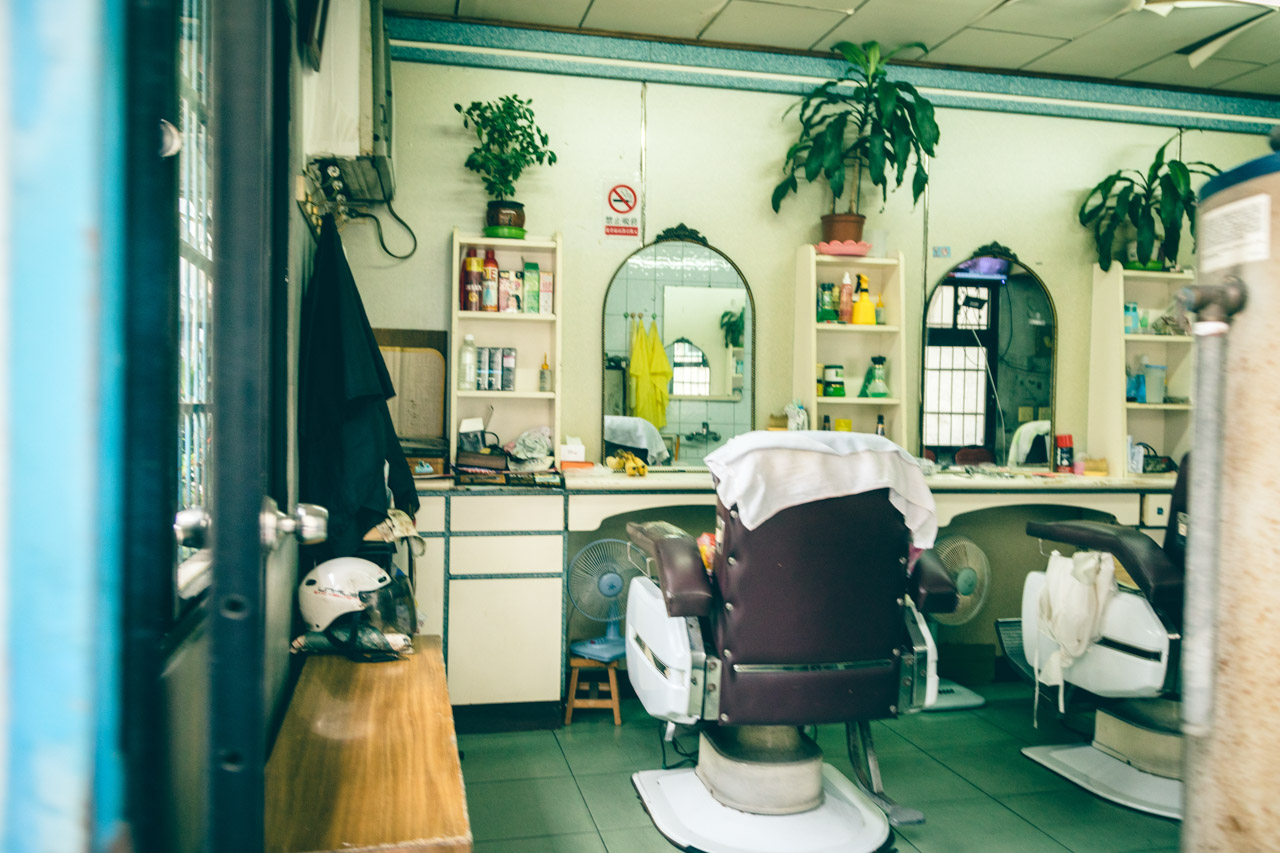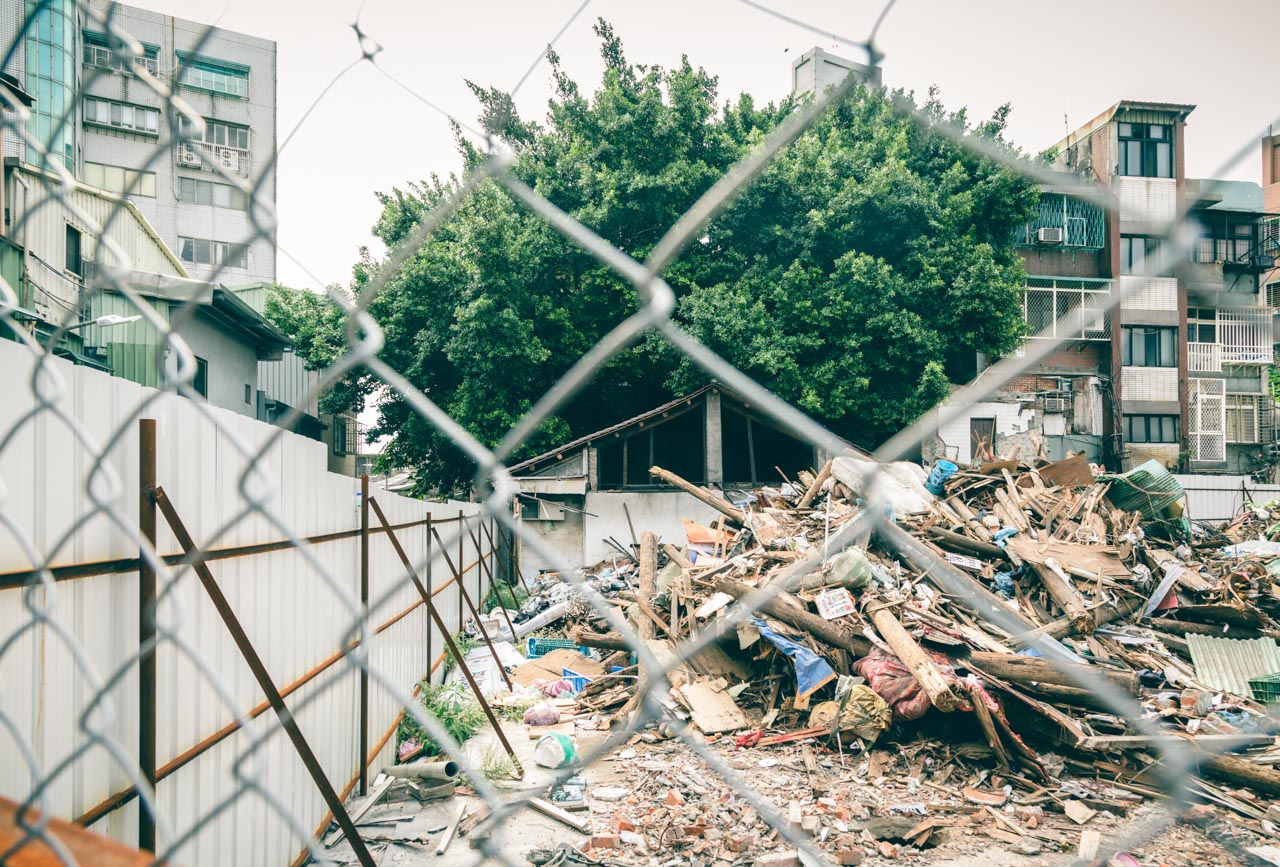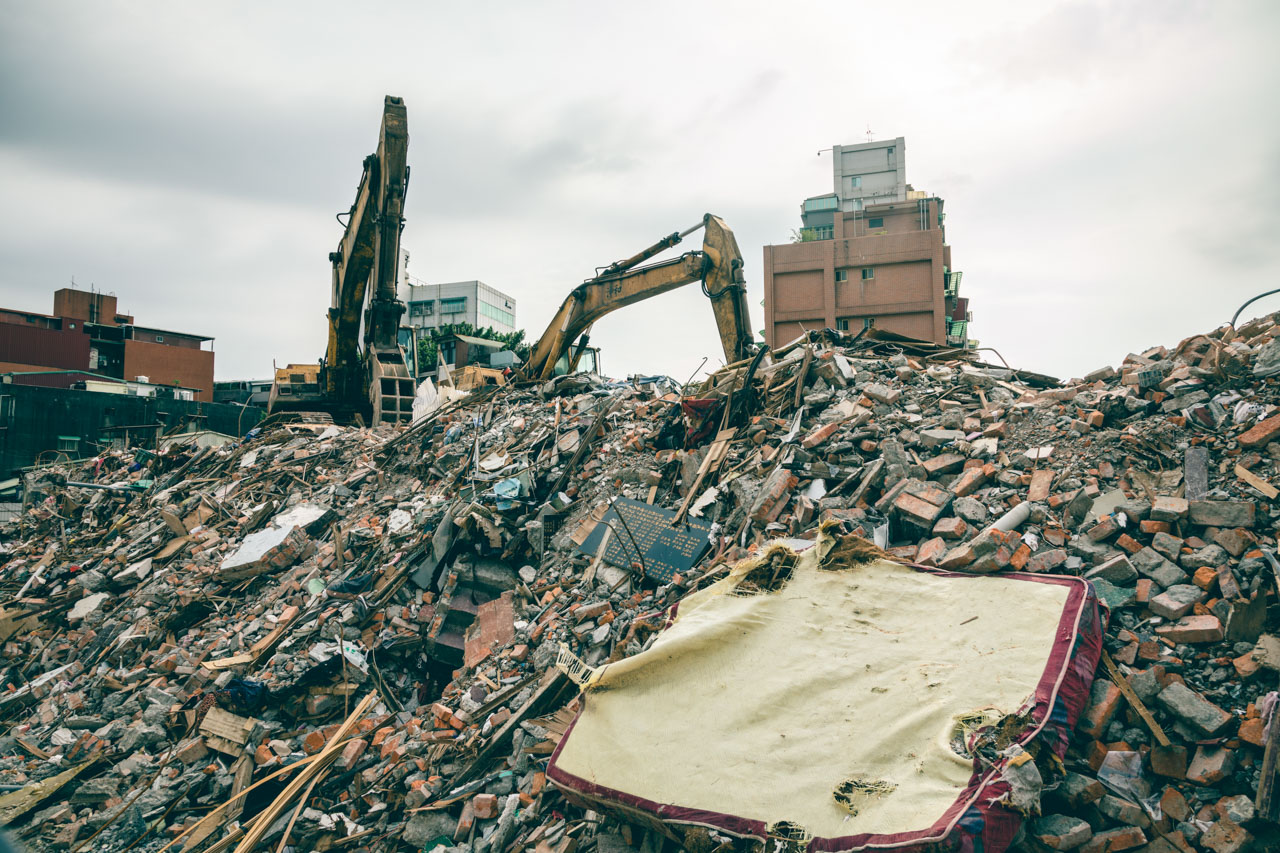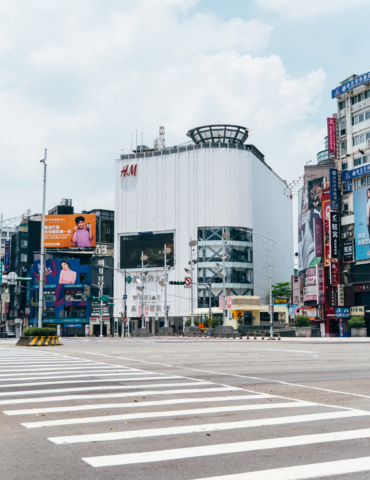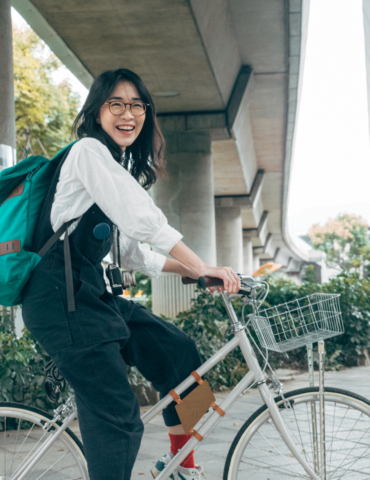撰文 Tyler W. Golec 攝影 李尚謙 中譯 胡芷嫣
嚮導 西城編輯群・Chun Lu・陳鈺鈞
我們再也沒有為了重諾守信而葬身大水的風險了。然而現在,正是現在,這些遙遠的神祇,或許比任何時候都要來得親密地,守護著那些仍舊祭拜祂們的人們——那些至今還沒有忘卻祂們的台灣百姓們。或許會有更多台灣人,睜開眼看見就在十分鐘捷運之外的台北老城歷史。又或許我只是比較幸運,能透過一些仍然在乎的發熱眼神,看見老派台灣的風景。也或許,我們只是在一切都灰飛堙滅以前,親眼見證時光殘存的少數人。
There’s no risk of drowning here from flood water anymore. There is no need to take your own life, so you and your brother can patrol the streets as gods. Now perhaps these gods, more personal than ever, offering their eternal protection to those who will still celebrate them, lighting fireworks in the streets, taking their visages out to march once again.Perhaps times will change, and more Taiwanese can see the history residing a ten-minute MRT ride away. Perhaps I was simply lucky to see the old Taiwan, from the perspective of a few who still cared.
我曾聽外國人和台灣本地人說,台北是個醜不拉嘰的城市。他們並沒有錯,就美學的眼光來說,就整個老台北——特別是台北西城——來說,確實是如此。
環顧西城,四周淨是歷史悠久的俗氣磁磚、水泥樓房。假如你知道該注意哪些細節,你就可以判斷哪座建築是在哪個時期蓋的,或這陣子有沒有「拉皮」過。在這當中,有些日本政府時代(或甚至更早)存活下來的古老房子,被乾脆不手軟地圍上黃色布條,與世隔絕,在都市塵煙中自生自滅。
這裡是許多人試著要遺忘的台北。
I’ve heard Taipei called an ugly city, by waiguoren and locals alike. They are not wrong. Not in the aesthetic sense. Not when they are talking about the Old City, particularly West Taipei. Much of the city is old style, cheap ceramic and cement. If you know what you are looking for, you can date when a building was built or most recently remodeled.
Some of the old buildings, from the Japanese government period, or older, are simply fenced off, and left to collapse. These are the parts of Taipei many are trying to forget. Who cares about history when you have Taipei 101 and ATT for Fun Center, clean hip clubs, bars with dress codes, and some of the most efficient public transit in the world? Perhaps the New Taipei is losing some of itself.
這也難怪,誰還在乎過去呢?當你有了台北101和ATT,有了潮到出水的夜店和衣香鬢影的酒吧,有了世界上數一數二有效率的大眾運輸系統,誰還在乎過去呢?或許,這座「現代台北」也快忘了自己是誰了。
你呢?你知道台北嗎?你認識台灣嗎?
它是一座在南中國海上的島嶼,不遠處,就是近年大聲勢動作要對它在政治和經濟上實施「統一」的中華人民共和國;長年來世界強權把它當作政治角力的籌碼,卻從未關心過在這座島上真實生活的人們。有如一截殘肢般,台灣垂蕩在太平洋邊緣,而你——我的西方讀者——真的了解這個蕞爾小國嗎?
What do you know about Taipei? What do you know about Taiwan?
It’s an island in the South China Sea not too far off the coast of its main land ancestral occupier. Though they are not the China Tiawan once belonged to, the PROC (People’s Republic of China) loudly and economically seeks dominion of it. Taiwan dangles like a severed limb on the periphery of the Pacific Ocean, as a hotspot for the global politics of superpowers, with little concern about the actual people of this island. What do you, my western readers actually know about this little place?
我親愛的西方讀者,你知道十七世紀西班牙和荷蘭在這座島上曾經一度交火,雙方短暫佔領這座小島嗎?知道1895年中日戰爭後,滿清皇朝將台灣割讓給日本嗎?你是否知道,日本人在這塊土地上錯綜複雜的文化遺緒呢,他們為這座島帶來了現代科技、藝術和音樂,卻也曾明令禁止台灣人講台語?還有還有,那些本地台灣人經歷過的恐怖遭遇——來自西方的我們都知道納粹大屠殺(the Holocaust)。
但是,有關大日本帝國對這些太平洋島嶼群的迫害,我們的歷史課本卻相對沈默。
Are you aware of the Spanish and Dutch conflicts and occupations in the 17th century? Do you know that China ceded Taiwan to Japan 1895, after the Sino-Japanese wars? Did you know about the mixed influence Japan had on the island, how they provided many modern technologies, art, music, yet also forced Taiwanese into dangerous labor in places like Jiufen, eventually alongside allied POWs.
Are you aware of the horrors they committed on the local Taiwanese people? In the west we know about the Holocaust. We are quieter in our history lessons about how the Pacific islands suffered at the hands of the Japanese Empire. Taiwan was “liberated” at the end of WWII in 1945, then used as the escape point for the democratically friendly government in China now fleeing Moa Zedong and the formation of the PROC.
今日,台灣處境艱難。1945年二戰結束後台灣「光復」,隨後成為中國國民黨的撤退據點,用來逃離當時的毛澤東和日益壯大的中國共產黨;如今,台灣除了步履維艱地追趕著幾個強盛的東亞經濟體之外,也同時在處理「追求現代化」與「失去自己的故事」兩者之間的普世難題。
我很榮幸,可以到老城區「台北西城」一遊,擁有三位本地年輕人擔任我的地方嚮導。他們滿腔熱情,要在台灣的歷史和現在之間搭起橋樑,保留下那些即將湮滅在時間中的台北人、物、事。
Now Taiwan sits in a precarious situation trying to modernize and keep up with the other powerful East Asian economies. It is also dealing with the familiar struggle of not losing itself. I was blessed with the opportunity to tour West Taipei, the old city. My guides were three young Taiwanese whose ambition is to reconcile Taiwan’s past with its present, and to help preserve much of what would be a travesty to lose.
首先,一趟旅行中大家最心心念念、最熱切關心的,當然就是食物了。
台北大街小巷充斥著麥當勞、星巴克、連鎖炸雞店,感覺有點像21世紀初期的紐約城(直到美國文青們動手將N.Y.變得再次又老又酷之前)(好啦,文青還是愛著星巴克,但至少麥當勞和其它速食連鎖店在這裡大不如前了)。另外,優秀的日式壽司餐廳和涮涮鍋店在這裡也不難找。但假如你要找的是正宗的台灣原汁原味,就得花上比這更多的工夫。
也許,試試豬肉搭上米飯?
The easier part to draw attention to is the food culture. With McDonald’s, Starbucks, and Fried Chicken joints popping up on every street corner, much of Taipei is looking like New York City in the early 2000s before hipsters started making everything old, cool again.
Well, hipsters still love Starbucks, but McDonald’s and other fast food joints have suffered losses recently in the States at least. A good sushi and hot pot restaurant are still easy to find, but you’ve started to need to look a little harder for the classic Taiwanese treats. Perhaps pork and rice sounds a little too simple to appeal to most modern foodies, but really, is there anything truly better?
聽起來有點太簡單了,大部分現代美食家可能會不屑一顧,但是,說真的,還有什麼能夠比這東西更正點的?我們的第一站,就是來到這樣一間簡單美味的傳統小吃店:慢火細滷入口即化的五花肉,濃郁滷汁淋在熱騰騰的晶瑩米飯上,配上新鮮的蔬菜和一顆必點入味滷蛋。這樣的一餐不只可以充飽你的能量表,讓你精力充沛度過接下來的一天,而且,相信我,好吃得沒話說。
The first stop my guides took me to was one such shop, for some savory pork served on rice with veggies and a couple soy eggs. Such a meal is sustaining, getting you through the day without weighing you down. It’s also, with no doubts, delicious.
參觀孔廟和保安宮之後,接著,地方嚮導們手上拎著冰涼的啤酒,在另一間小吃店停下來。我們點了豬血湯。我知道,正在讀這篇文章的西方世界讀者,看到上面那三個字,大概都皺起眉頭、嘴裡「哀額」了一下。但是,請務必試試吧!就像我那波蘭裔老爸說的,你起碼每件事都該試一次看看,反正如果不喜歡,可以隨時停下來。
凝結成一個個小方塊的豬血,盛在清淡但滋味飽滿的高湯裡。一旁的米粉炒,可以中和一下嘴裡豬血的味道,還不錯。此外,我的嚮導告訴我,從這碗湯就可以看出傳統台灣人勤儉持家、堅忍不拔的性格,就連動物的一滴血都堅持不、浪、費。
After a tour of Confucius’ and a Taoist temple, guides with their beers in hand, we made a stop at another traditional Taiwanese restaurant to order pork blood soup.
I know most westerners probably cringed at reading that sentence, but honestly give it a shot. My father, from a mostly polish family, told me you should always try something at least once, you can always stop eating it. The pork blood is congealed into little squares and served in a light broth. It’s good with some rice noodles served in a side dish to help balance out the flavors. My guides shared with me how Taiwanese wouldn’t waste any of an animal, not even its blood.
另一個令我難忘的食物是台灣香腸。吃起來甜甜的,要和整瓣蒜頭一起入口。
在此之前,我從來沒想過人類可以直接吃一瓣蒜頭,但反正我接下來一整天沒有要跟誰親親,我想我也該豁出去試一下……結果,甜甜的台灣香腸和重口味的蒜頭一搭一唱很巧妙,嗆辣的蒜頭竟然能瞬間變得這麼爽口,大出我的意料。
Another memorable food stop was when we grabbed some traditional Taiwanese sweet sausages, which you eat alongside a clove of garlic.
I had never considered eating a clove of garlic straight up before, but I wasn’t planning on kissing anyone that day, so I figured I’d give it a shot. The extremes of flavor actually paired rather nicely, making the potency of garlic enjoyable in a way I would never have conceived of before.
旅程最後,我想認真談談一點文化的議題。
在我們的西城之遊終點站,地方嚮導帶我走進一條擁有200多年歷史、狹窄蜿蜒的小巷。
日本政府引進格子般方正簡約的現代城市街道設計之前,這裡曾是台北城的主要道路之一;而現在,這裡淨是傾斜荒頹的房屋,和被遺忘的斷垣殘壁。我的嚮導告訴我,政府原本聲稱會挹注資源來維護這些歷史古蹟,但諷刺的是,目前這裡最大的經濟支持力量,似乎是來自「保護」這裡的幫派勢力。
Finally, I want to discuss the cultural relevance of some of our ending destinations. They took me to a narrow winding street, which was over 200 years old.
It had once been one of the main streets of Taipei, before the Japanese government period, which introduced the modern and popular grid pattern to Taipei city design. Now these streets are home to buildings on the verge of collapse. According to my guides, the government has falsely claimed that it would devote effort and resources to sustaining some of these historically significant sites. Oddly enough, the greatest financial efforts to preserve these streets seem to be coming from the gangs who currently “protect” them.
從老人家付6塊USD的茶資就可以坐一整天喝茶閒聊的茶店,到眾神廟與土地公廟(雖然現代世界更強大的資本眾神時不時買走了土地公伯的土地害祂被迫搬家),在這裡,和那裡,滿載著這座城市的回憶。
從前富有人家才買得起的紅磚宅第,現在躺在高速公路和快速道路呼嘯而過的城市邊緣,安靜地倒塌衰頹;曾經望向窗外,就是美麗的淡水河景,現在卻是成堵的灰色防洪牆。
From tea clubs, where old men pay six USD a day to sip tea and socialize, to the houses of gods, and temples, sometimes forced to move because the modern gods of capitalism bought out their former residence. There is culture laden on history here.
Former red brick houses that used to be prized by the wealthy, now left to dilapidation, on the edges of highways, and throughways. Their waterfront views blocked by towering sea walls.
不像七爺和八爺,我們再也沒有為了重諾守信而葬身大水的風險了,也沒有必要用自己的生命,讓你能和拜把兄弟當神明遶境。然而現在,正是現在,這些遙遠的神祇,或許比任何時候都要來得親密地,守護著那些仍舊祭拜祂們的人們——那些在小巷弄裡摀著耳朵點燃鞭炮,一次又一次戴上祂們的「大仙尪仔」參加廟會巡境——那些至今還沒有忘卻祂們的台灣百姓們。
There’s no risk of drowning here from flood water anymore. There is no need to take your own life, so you and your brother can patrol the streets as gods. Now perhaps these gods, more personal than ever, offering their eternal protection to those who will still celebrate them, lighting fireworks in the streets, taking their visages out to march once again.
誰知道呢?或許一切會改變。
或許會有更多台灣人,會睜開眼看見就在十分鐘捷運之外的台北老城歷史。又或許我只是比較幸運,能透過一些仍然在乎的發熱眼神,看見老派台灣的風景。也或許,我們只是在一切都灰飛堙滅以前,親眼見證時光殘存的少數人。
Perhaps times will change, and more Taiwanese can see the history residing a ten-minute MRT ride away. Perhaps I was simply lucky to see the old Taiwan, from the perspective of a few who still cared. Maybe we were some of the few to see what’s left, before there is truly nothing left to see.
– End –
核稿編輯 鄭婷文

